August 12, 2018
Martha O'Kennon
It hardly seems possible that we are lost somewhere hot and humid and then suddenly drowned in a trick rain. But it's so. Most everyone seems to be so busy - I know how hard it is to say "no" but it is delicious to sit back with a nice cold coffee & milk drink and look at this week's pictures. I just read an article about coffee's many subtle aspects, so maybe that's why any task goes more smoothly with a cuppa. Here is a sweet little bee on a thistle flower. I still have that old Black-eyed Susan that volunteered last year. But this picture with a Goldenrod Soldier Beetle was in my friend Kathleen's beautiful garden. The bee in this third picture looks quite a bit like the one on the thistle.
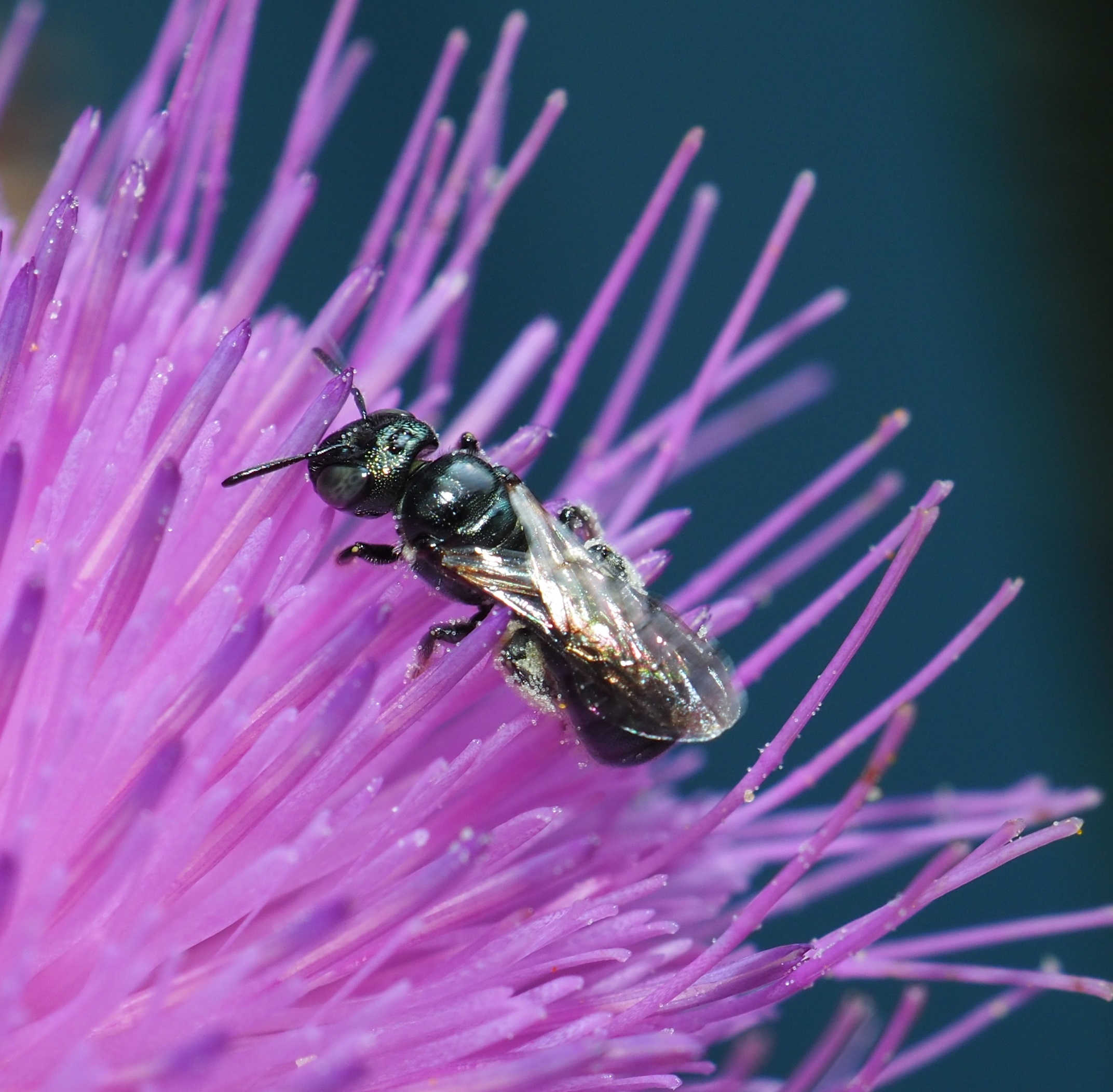
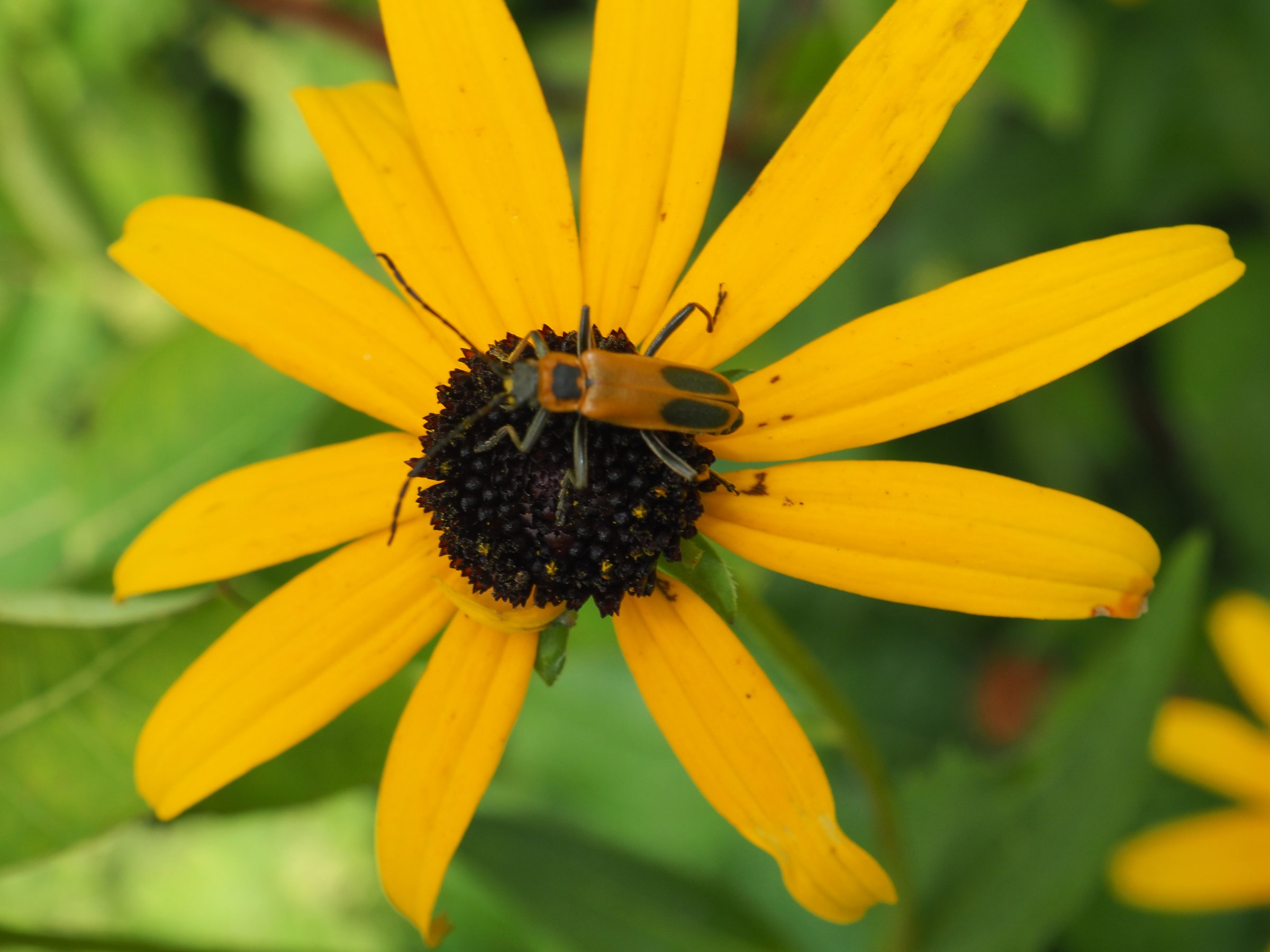
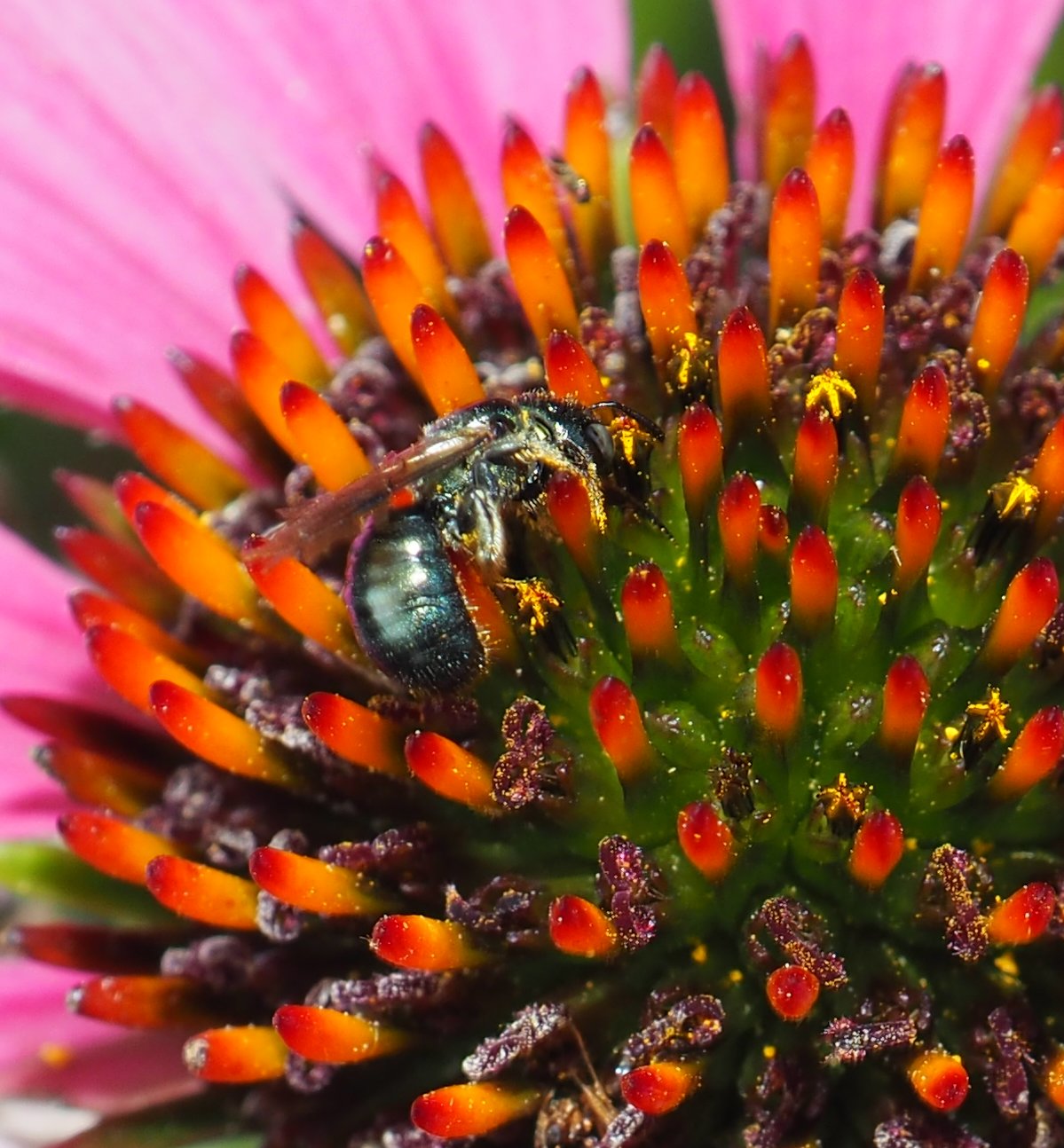
Remember that there is information in the name of the file for each image. You can see it by mousing over the image - look at the lower left of the screen. Or you can click on the image to get to the (usually) larger image. Then the info is displayed in the address line above. Sometimes the second click will actually display a different view of the original image.
Here I used to believe that all the ants in my garden were one of three Carpenter Ant species, but I'm sure it's more complex than that. The first one here does look like a Carpenter Ant. It can use those heavy-duty mandibles on that stiff wood, rotten or otherwise. Many of them use other color values to expand the range.
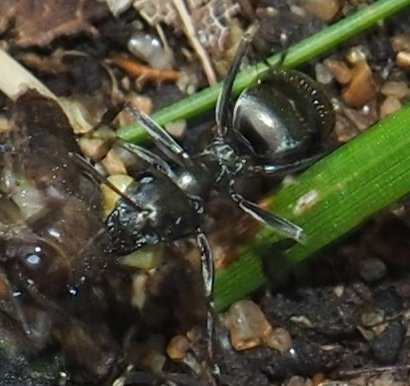
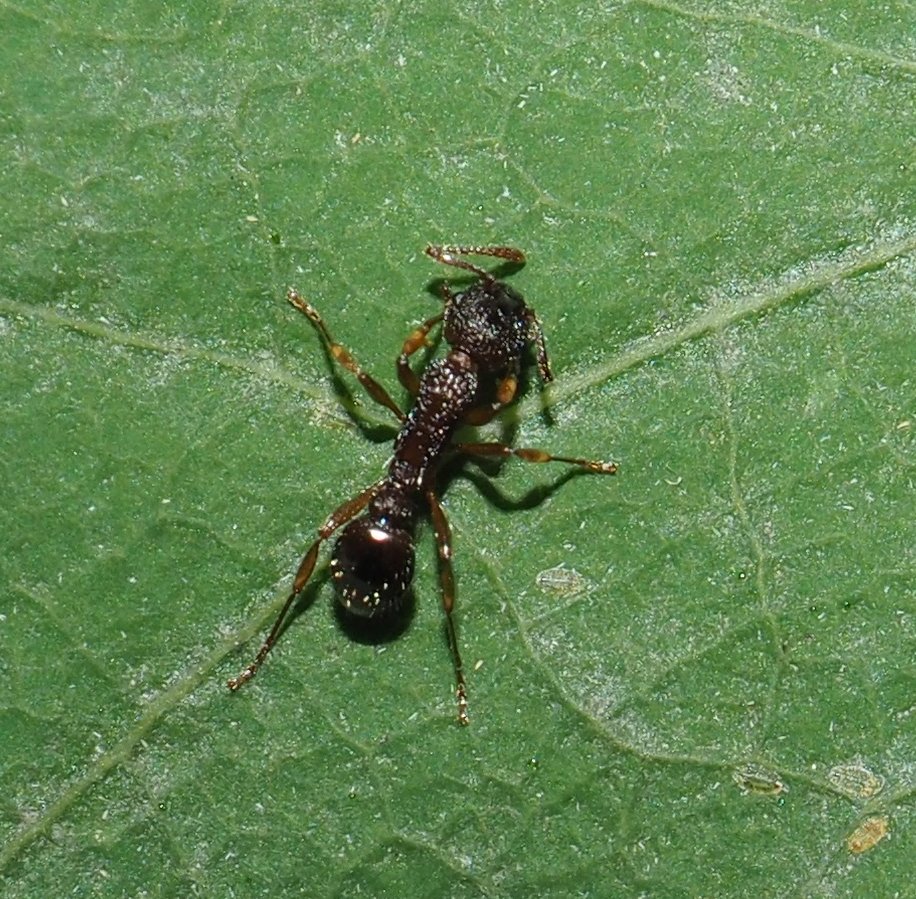

Some ants are winged. Confession: I've no idea who or what this first one is. Usually they are females of the society wishing to spread their civilization to another spot. Sometimes you will see a whole group of winged ants, some small and some large. The largest one of all is usually the queen, who has to move in coordination with her family to establish a whole new nest. Here our winged friend is about to move on. Don't forget our strange friends, the ant mimics, like our last two characters. The mimic may be a fly, a bug or a spider and probably many more kinds.
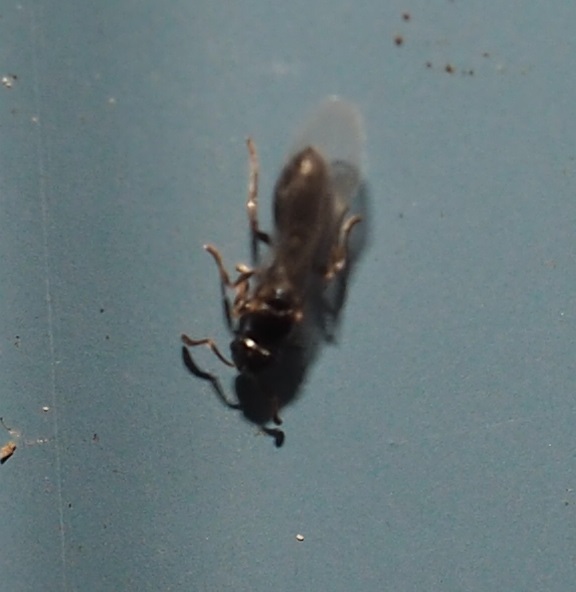
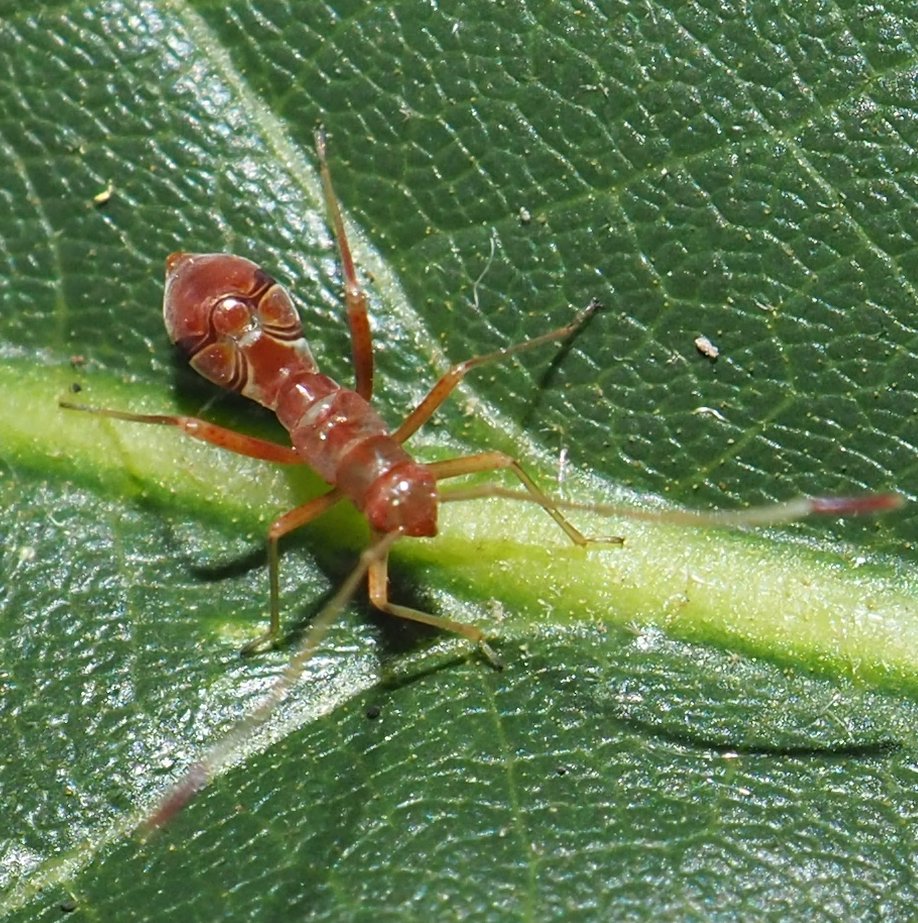
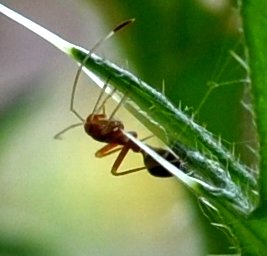
But this week I learned something else about ants. Here are three photos of ants munching on pink or red growths on the edges of a fairly slight oak branch. I don't know what these yummy-looking gummis are but the ants are intent on eating them. I found this scene repeated on several small oaks.


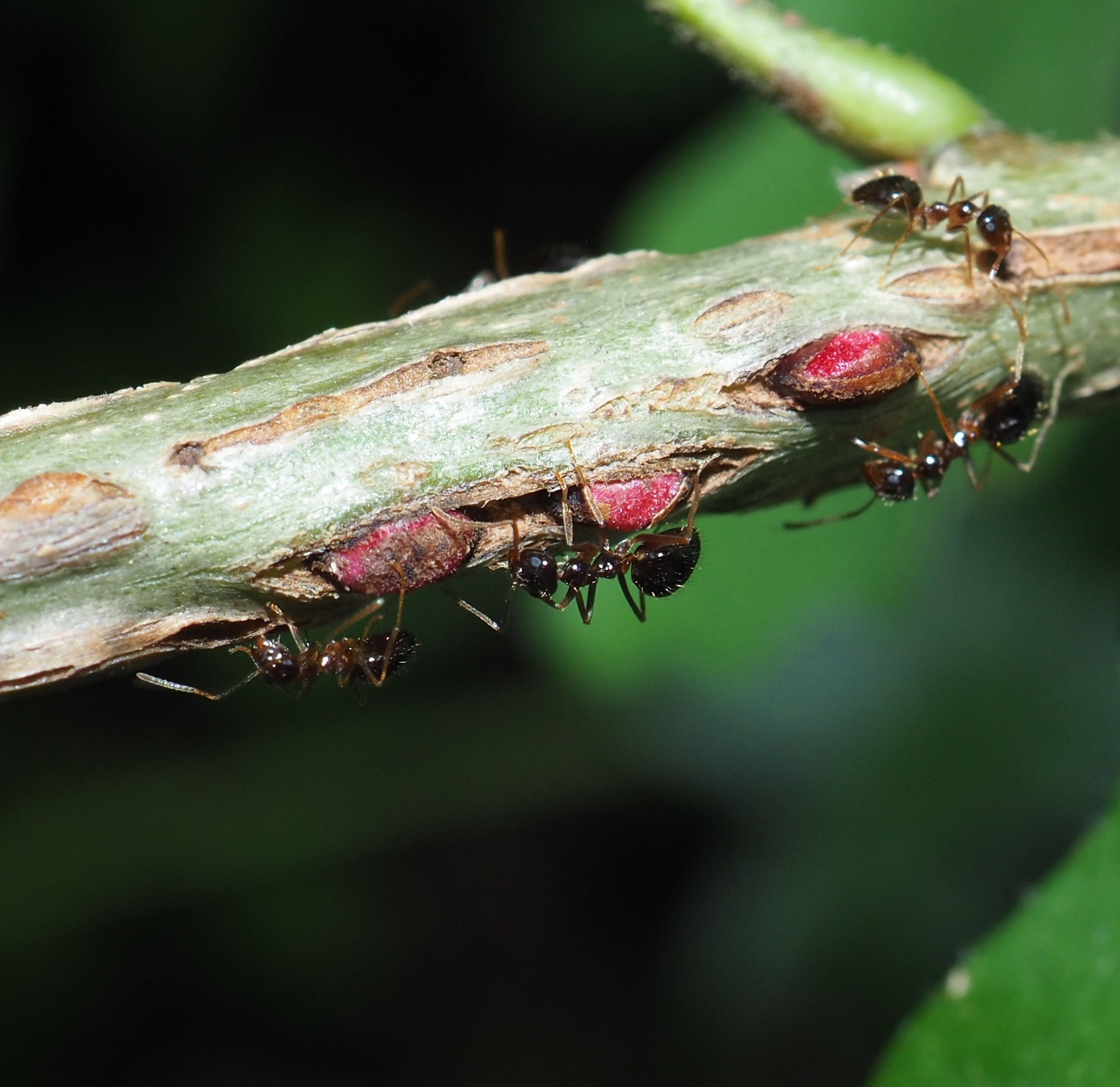
The barklice were a bit more careful so as not to be seen. I saw at most three of them. I'm not sure of this first one. But the second is an old friend, the "tiger" barklouse, I thought at first that the third was polypsocus corruptus, but now I think it is a different species.
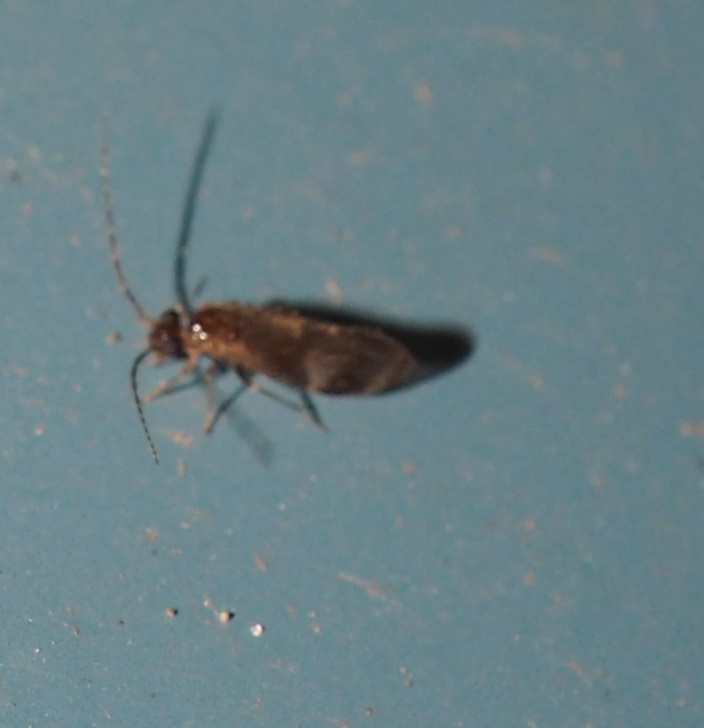
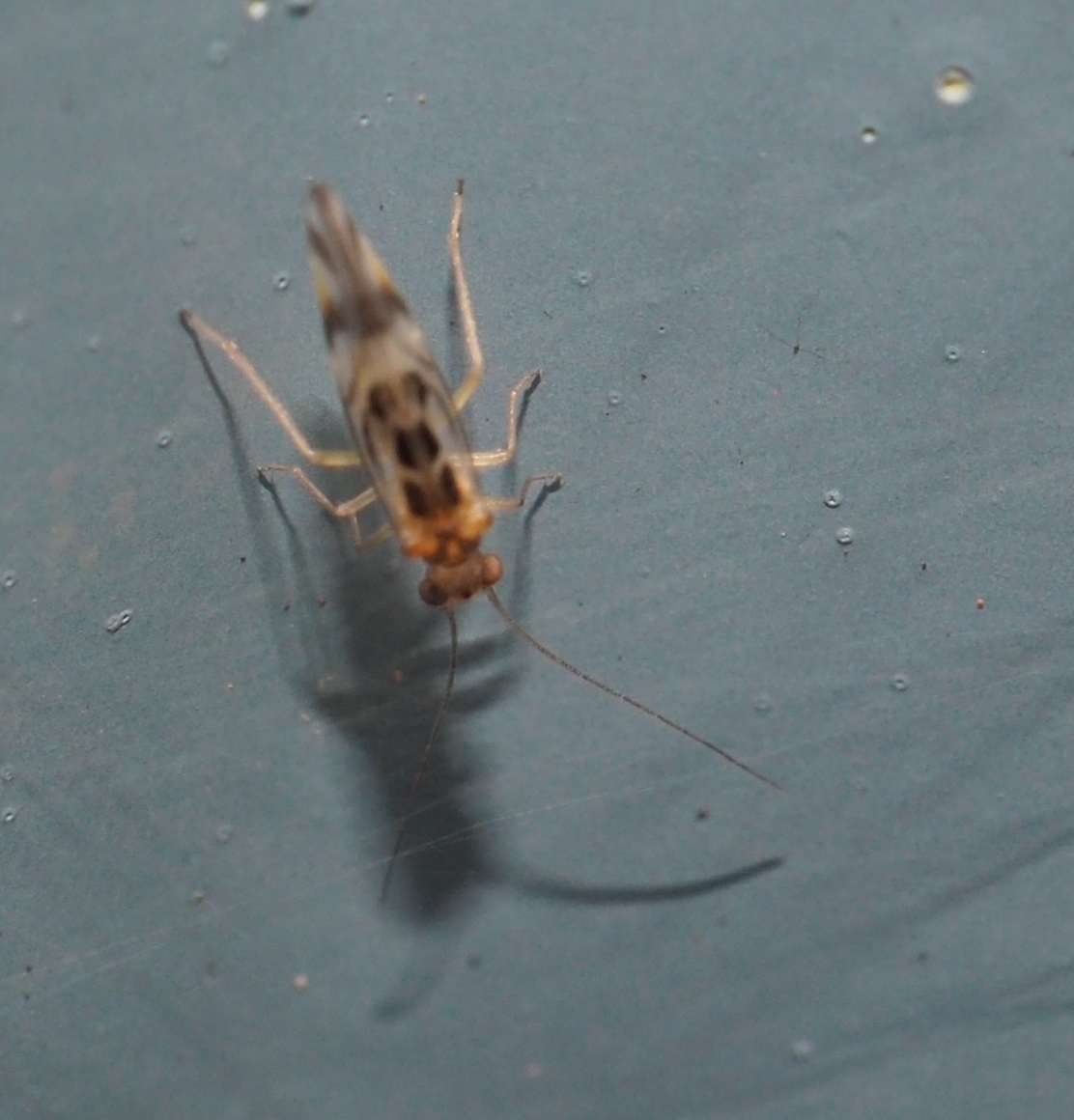
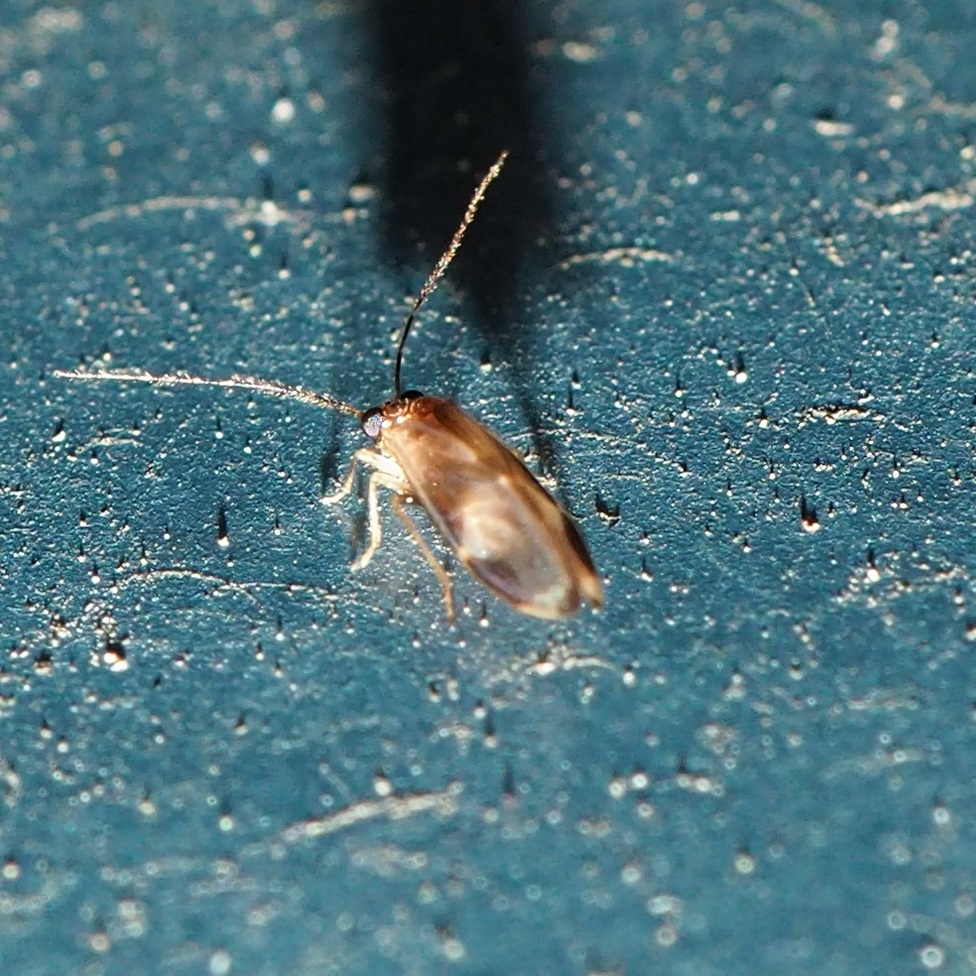
Since you've seen the most common bees around here, let's take a look at the beetles. Here's that Goldenrod Soldier Beetle again, and again in Kathleen's garden. The Japanese Beetle is of course a fixture of my weedpatch. And once in a while we get a weevil or two, like this pretty one.
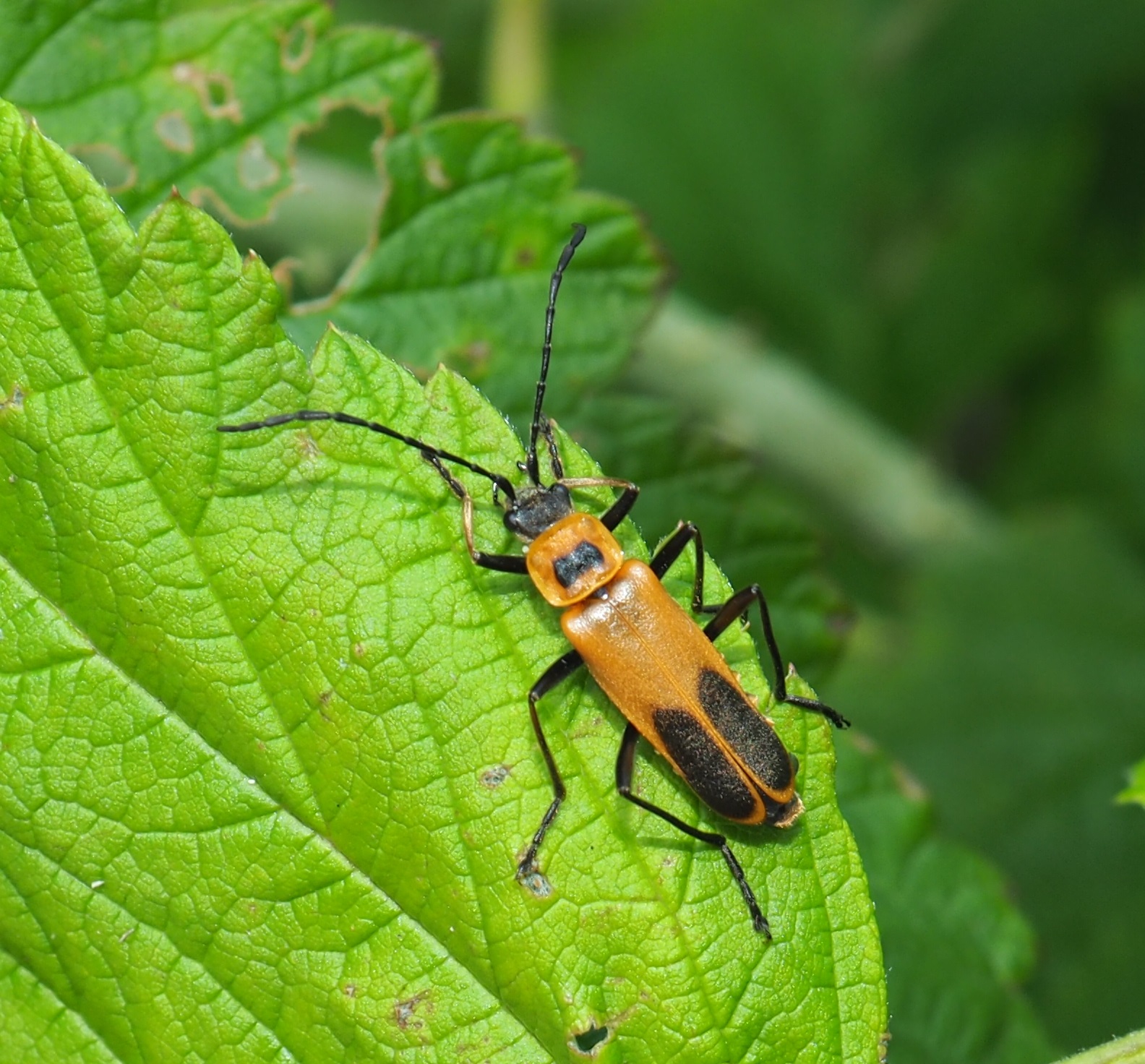

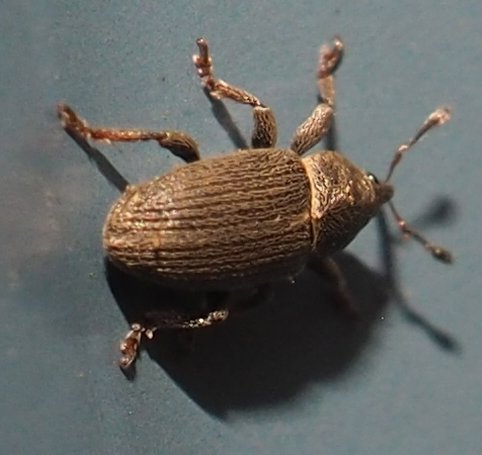
Now we turn to THE BUGS!
Our most common visitor was the Assassin Bugs, mostly Zelus luridus. We had several different sizes, some of them very young I believe. Look at the difference in abdomen length between #1 and #2. Then check out the lovely blue color of the abdomen of #3. #4 is the dorsal view of #3. The color depth in the last two babies seems so much deeper.

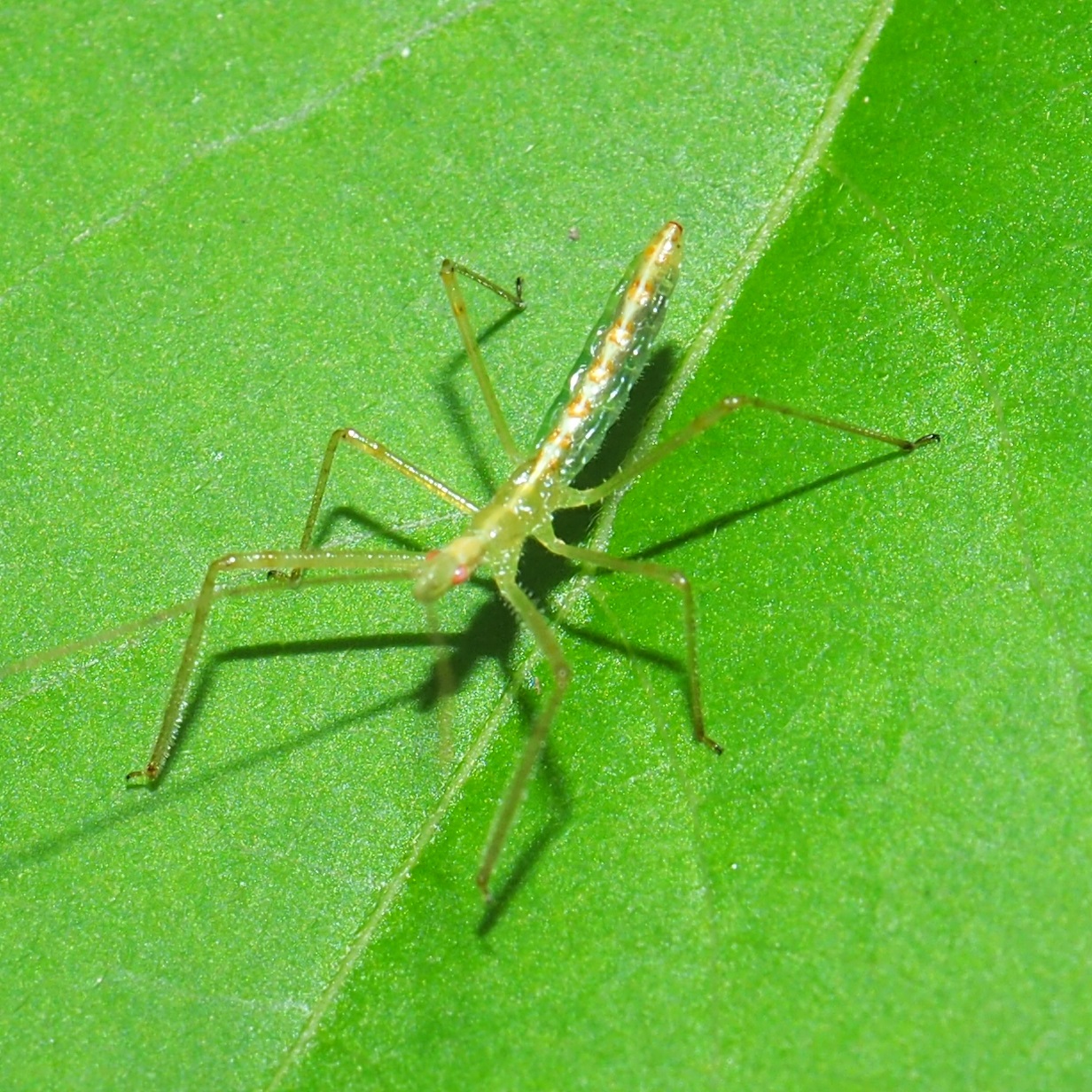
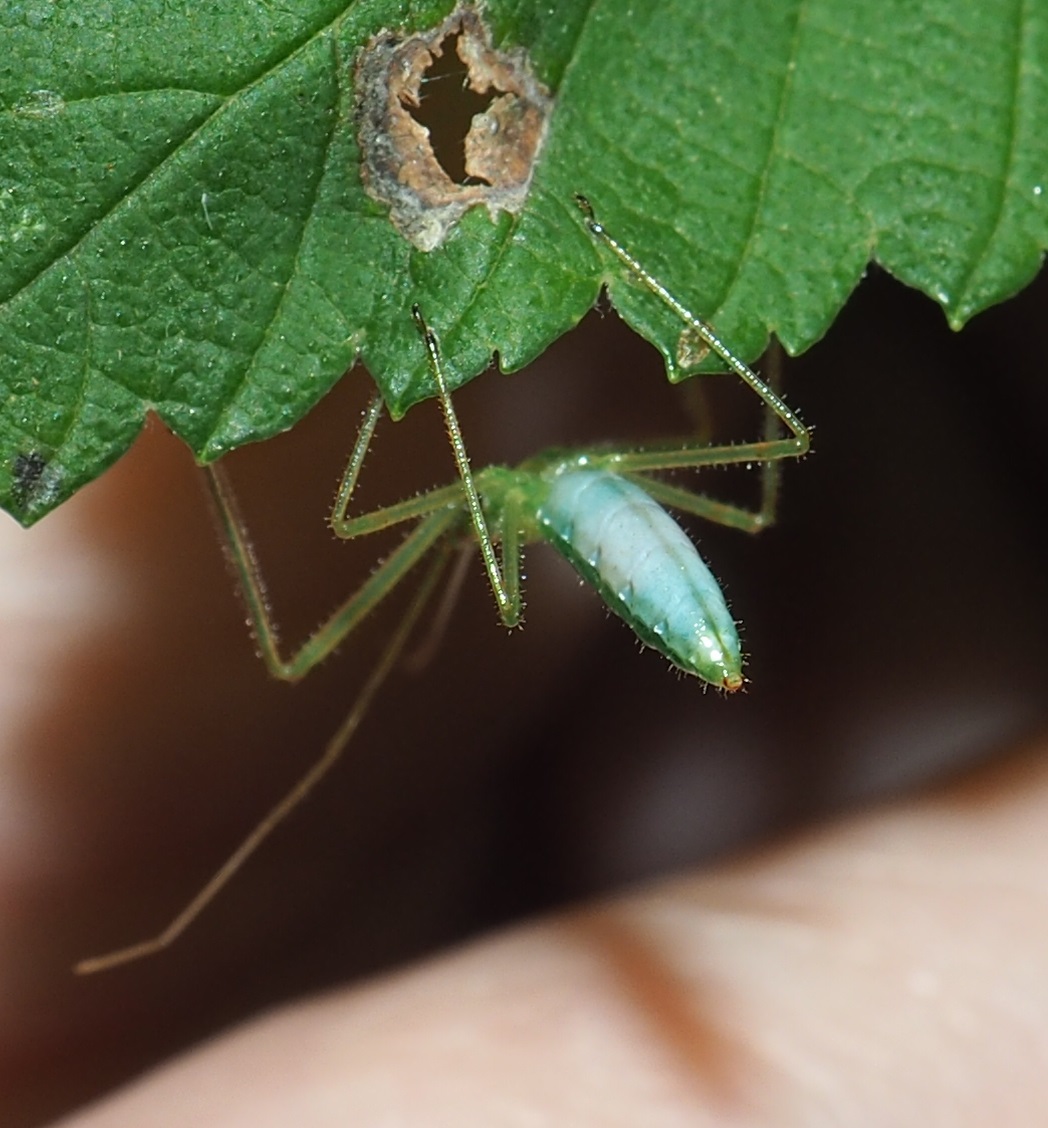
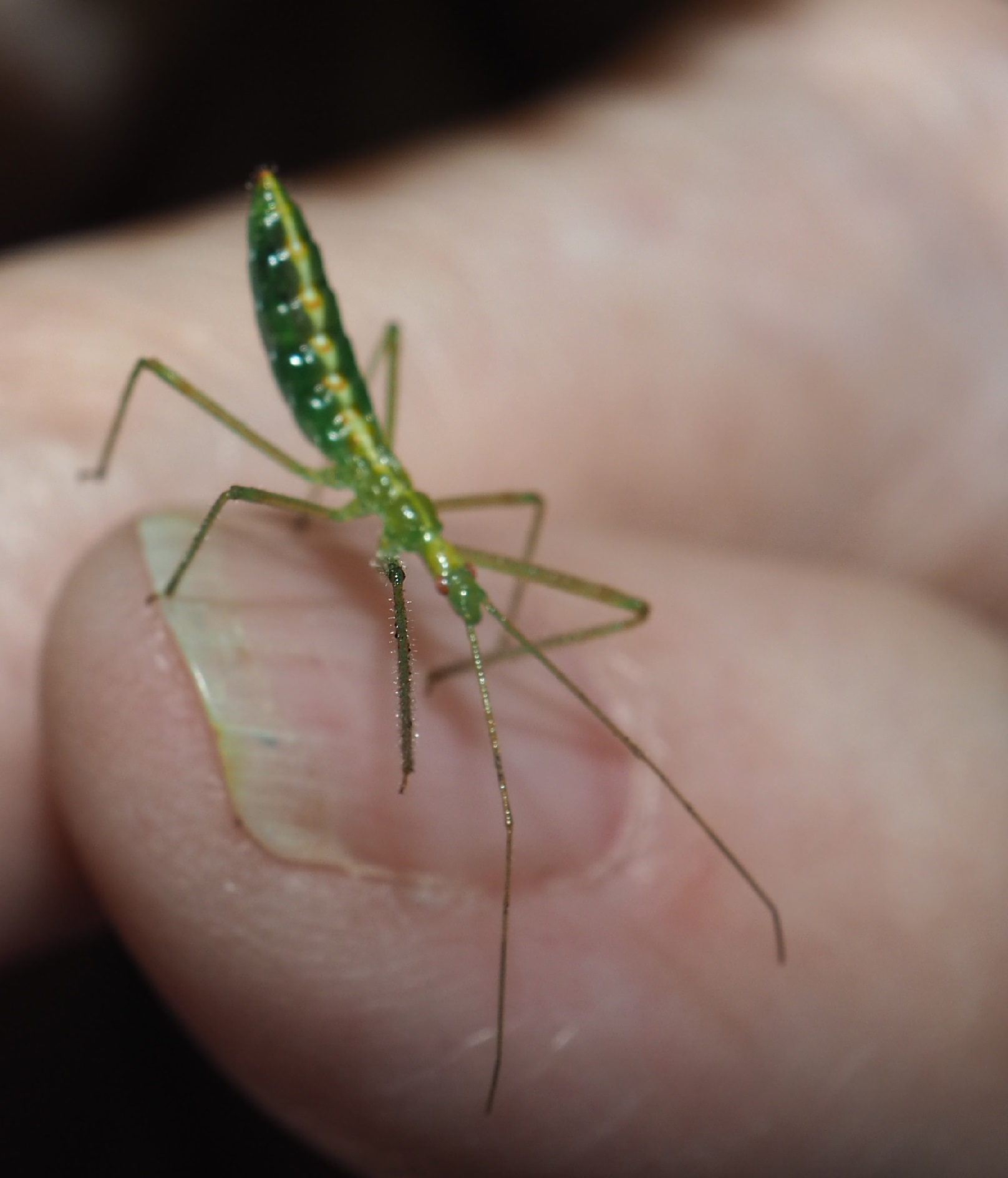
I finally got a good picture of the lace bugs. How intricate they are. But now we have to go chasing leafhoppers. They are still the easiest of the hoppers to find. (I did find one planthopper, possibly another Flatus Planthopper, on my goldenrod but it hopped far off, getting tired of my looking for the focus and angle.) Most of the leafhoppers were very young, almost luminescent specimens, like these two.
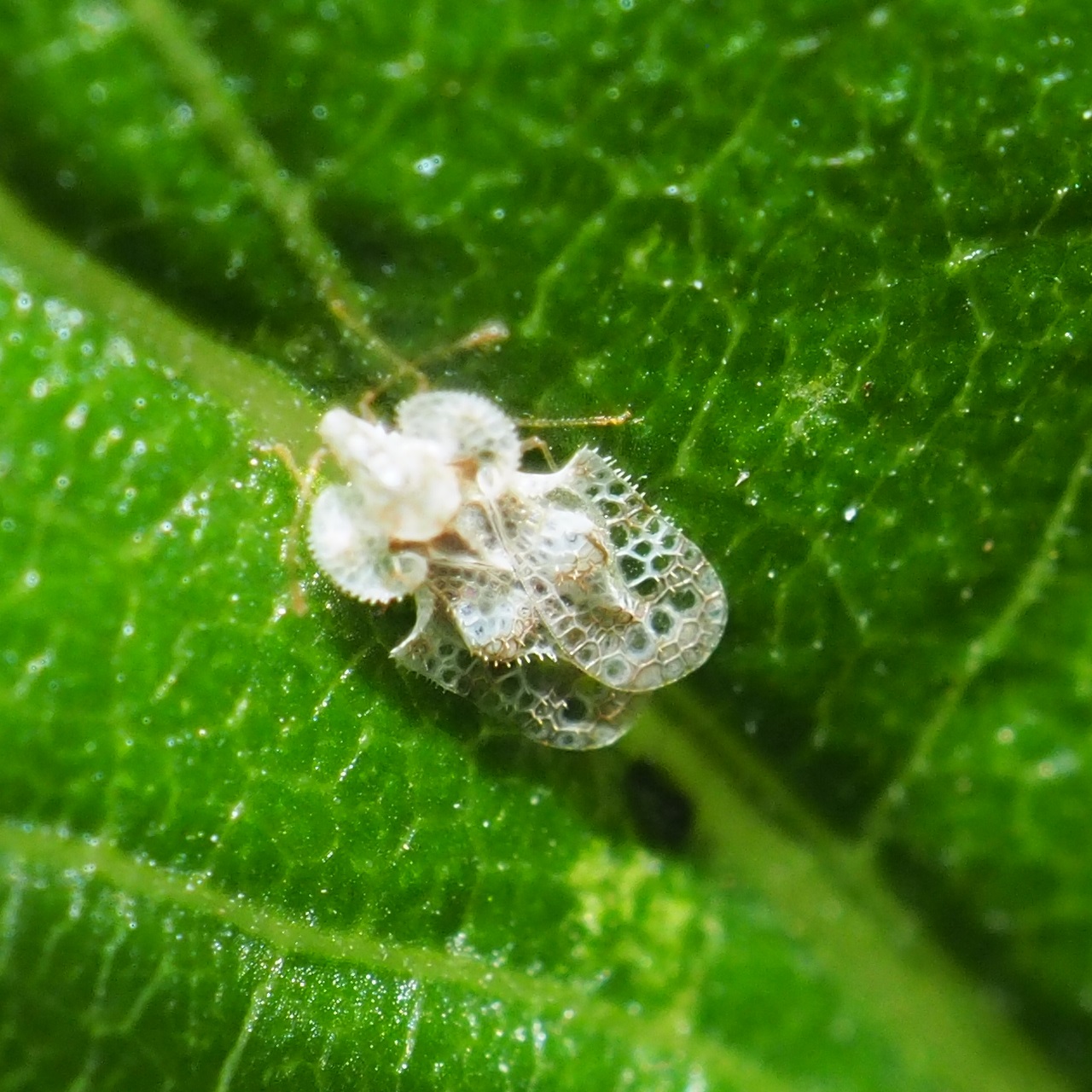

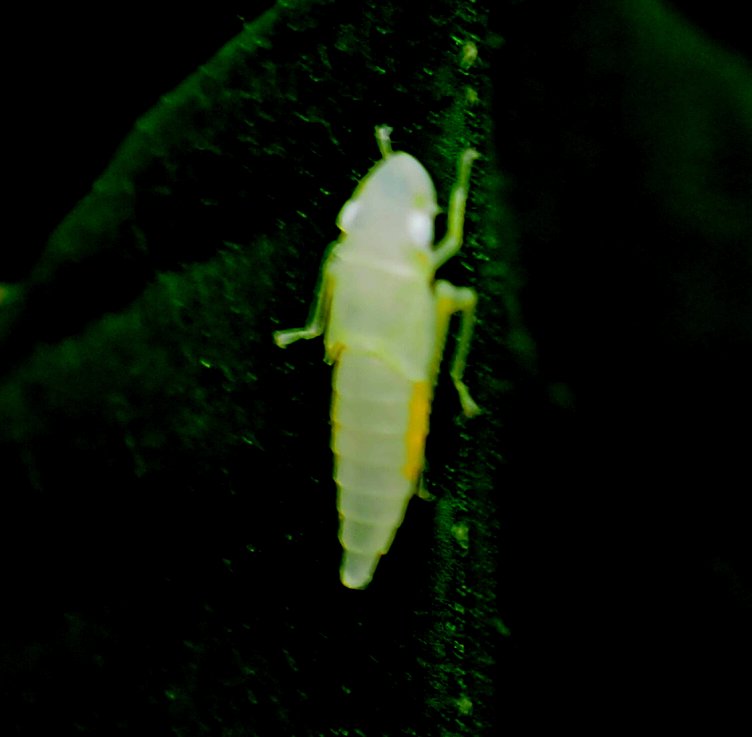
Here are two candy-stripers, a little different in their shades of blue. The last two are two different individuals but I think they must be the same species or close.
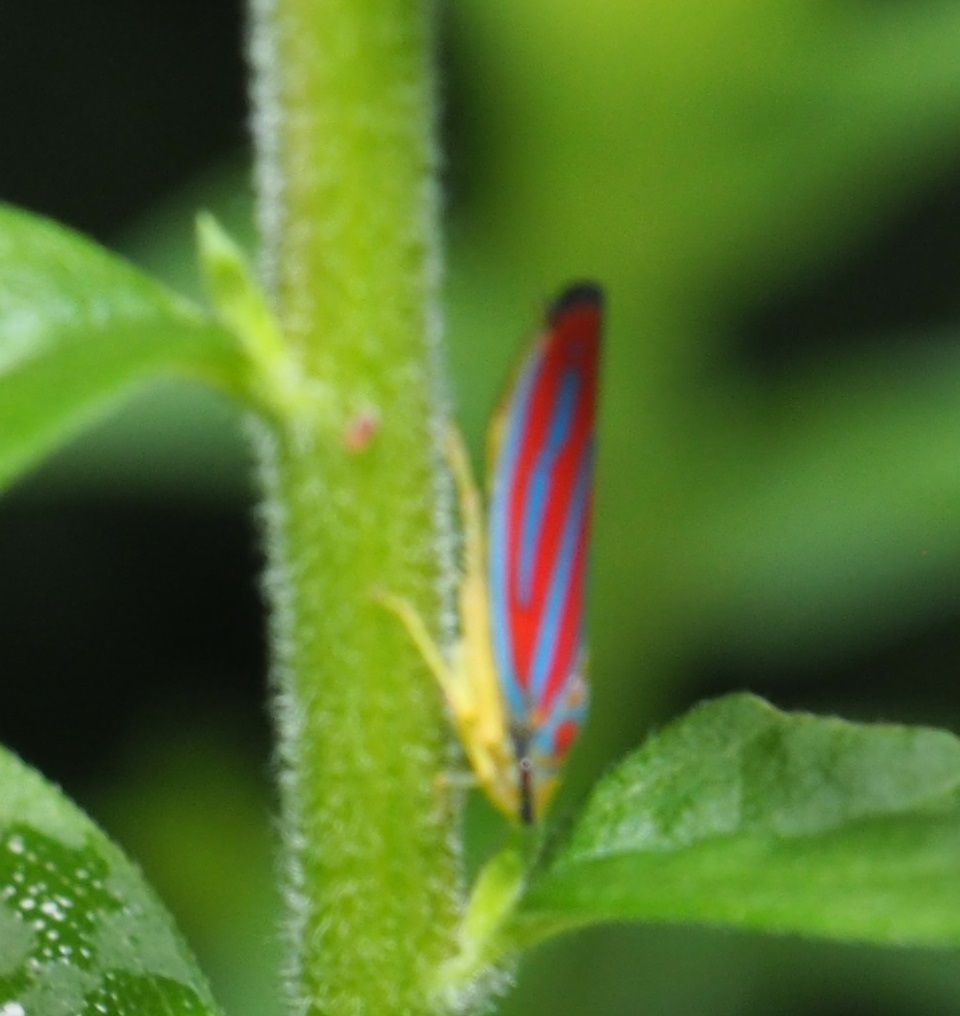
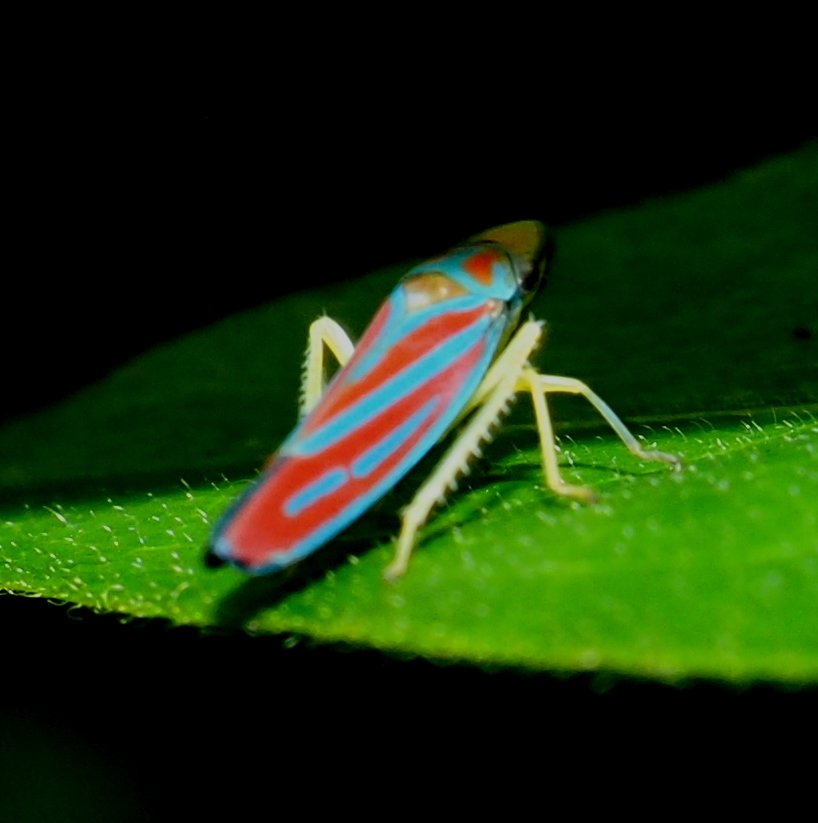
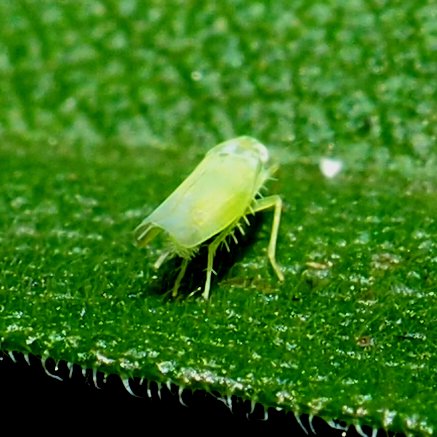
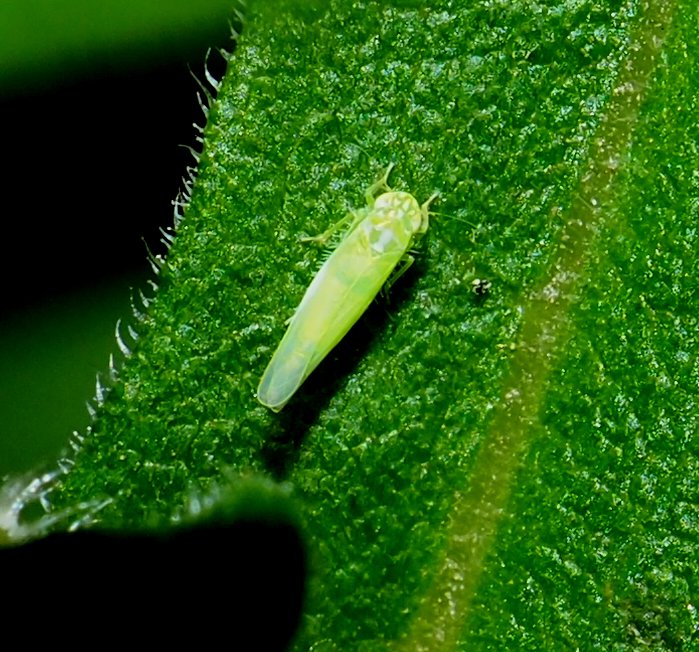
This first one is either a Leafhopper or a Spittle Bug. Second is probably a leafhopper. The third is a real Meadow Spittle Bug.
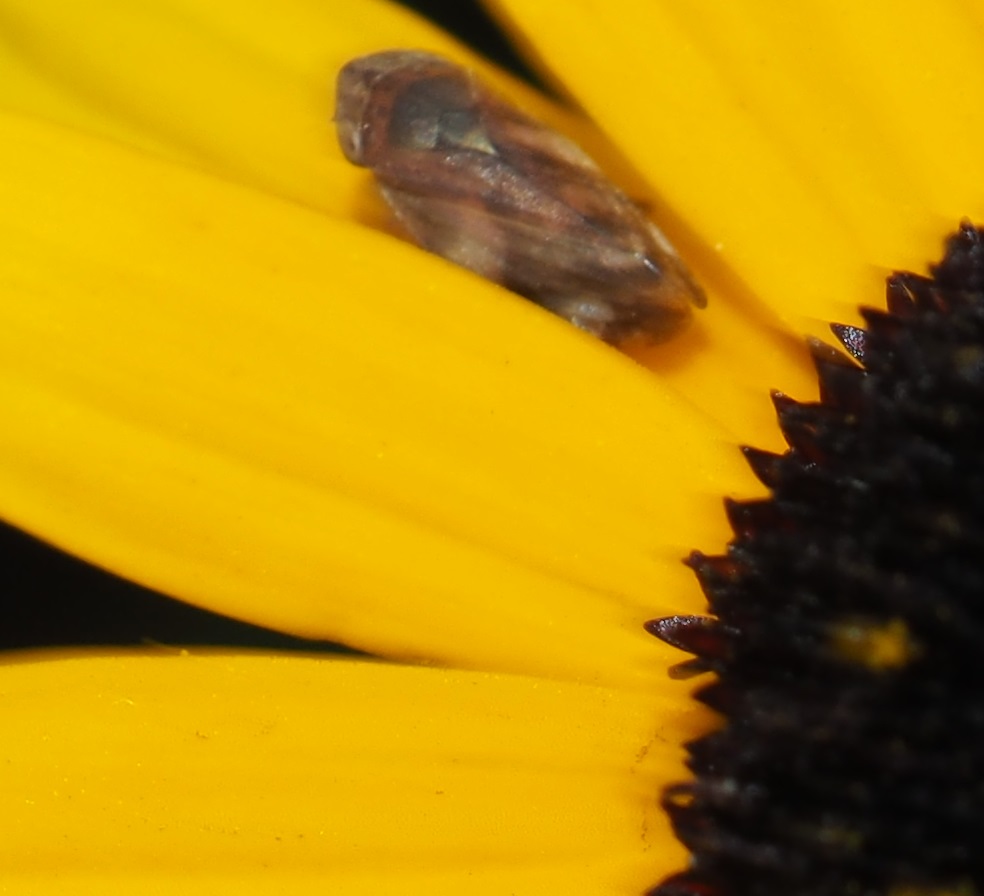
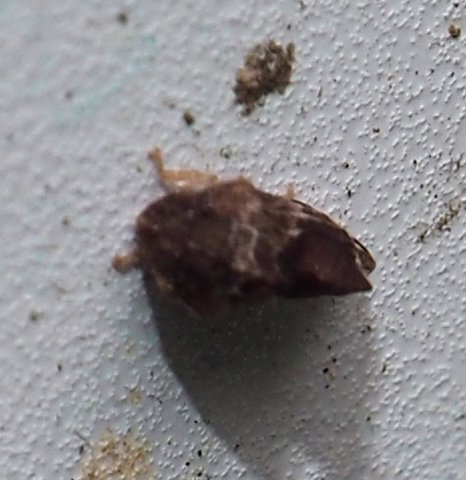
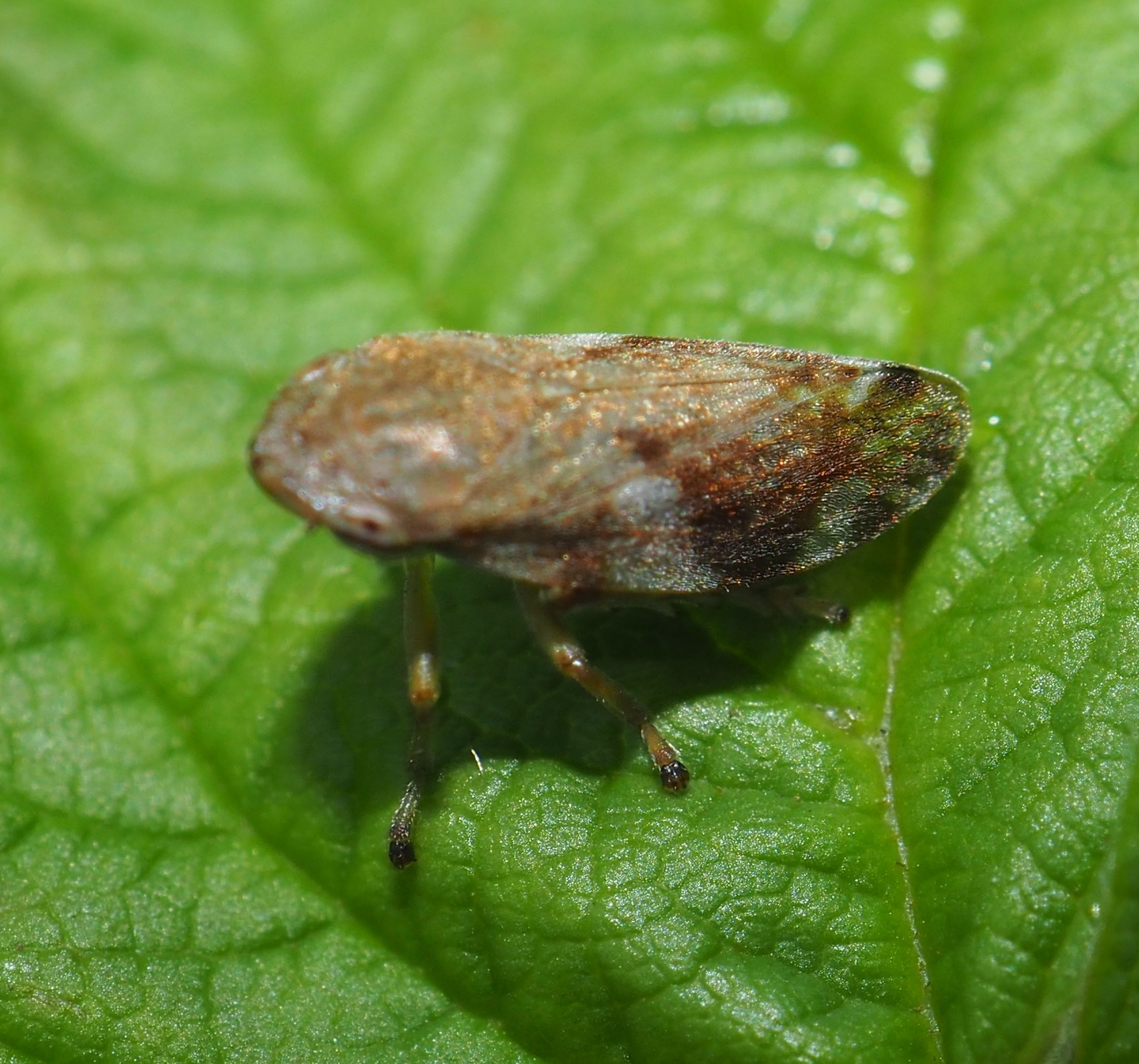
Here is a Cicada nymphal shell. To change the subject a bit, How about the Stink Bugs? It seems that the first one is some kind of Stink Bug enjoyed for dinner by a spider. The second is the one we seem to like, possibly because of its subtle coloring.
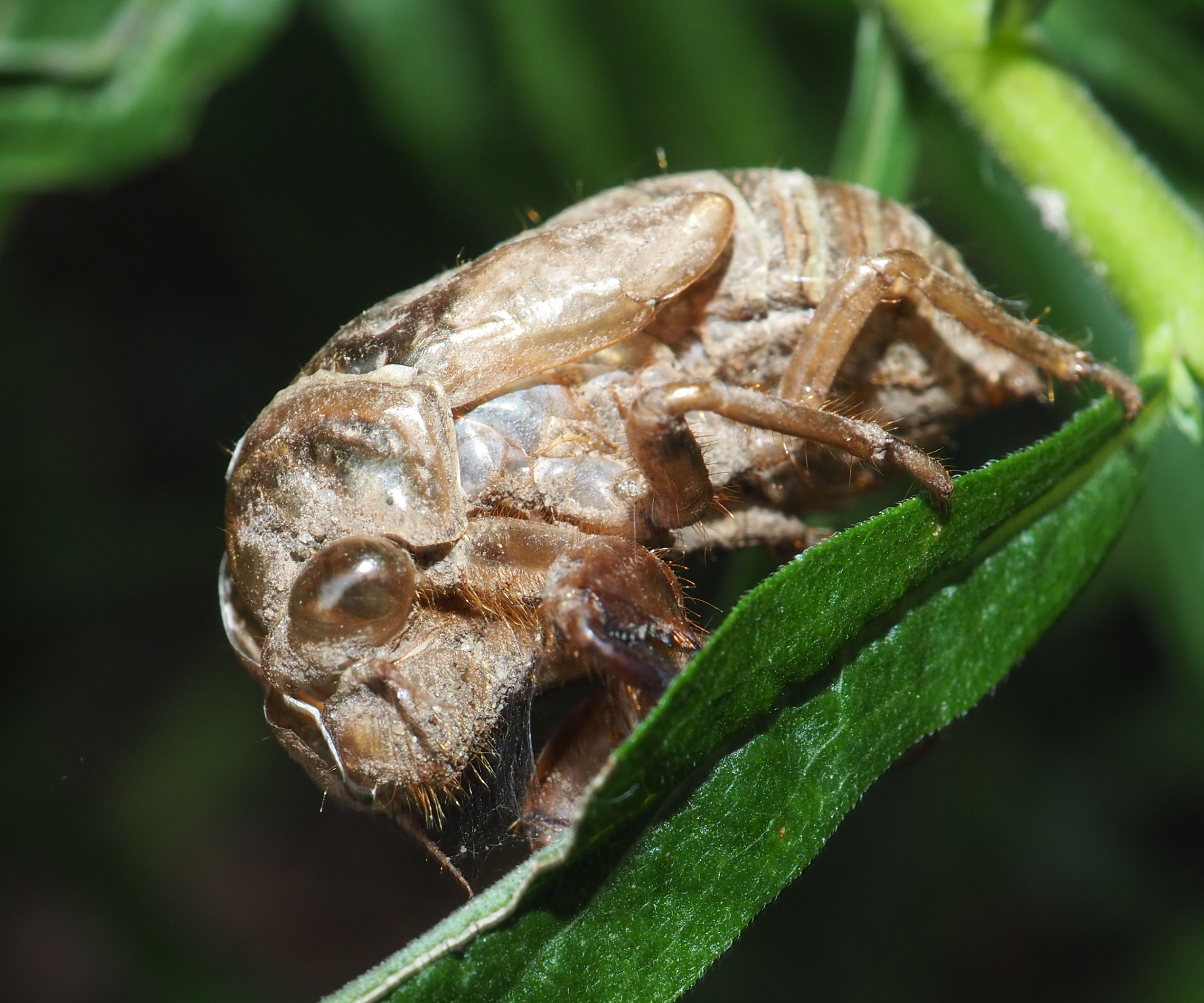
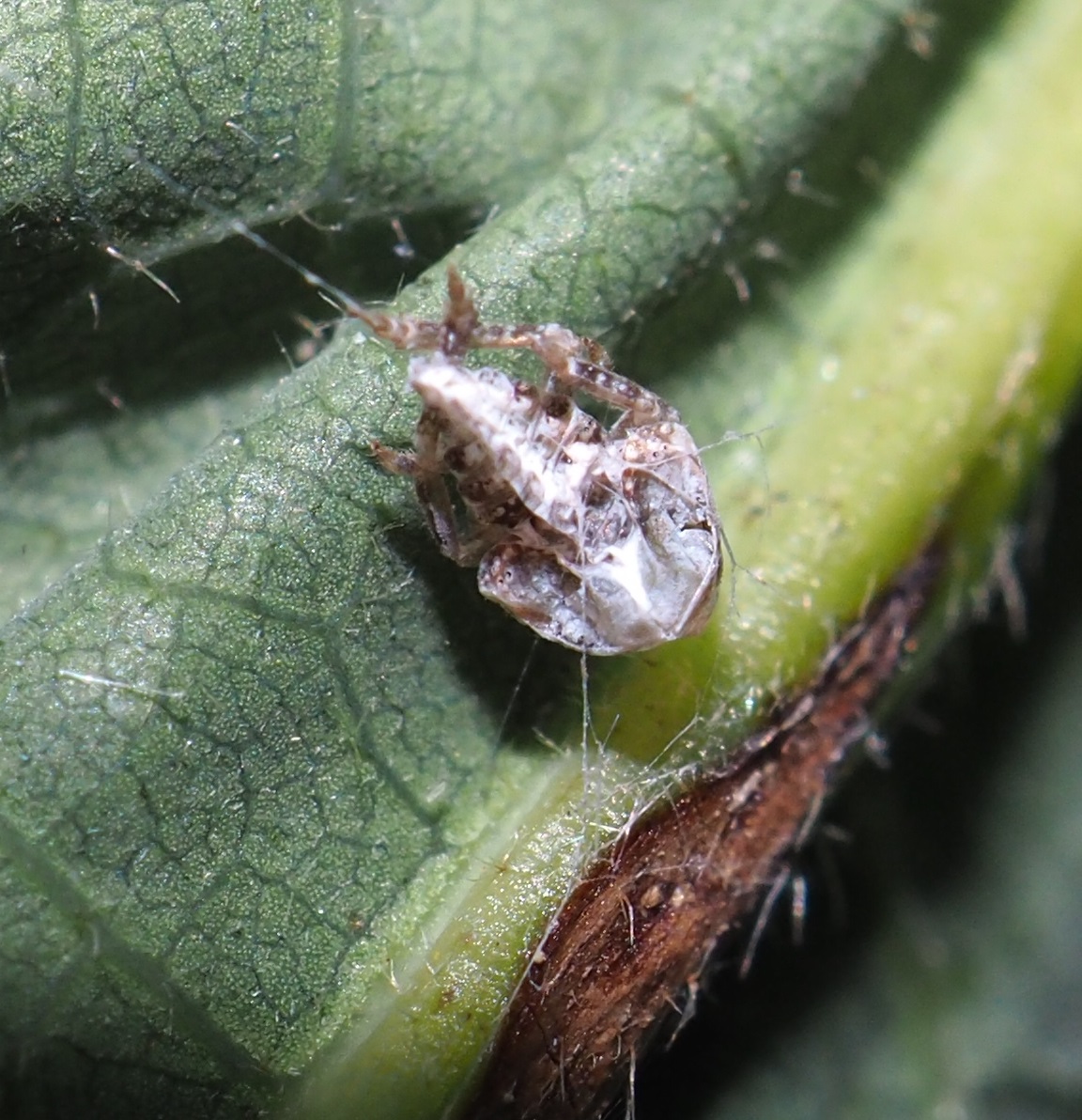

Here are a couple of odd bugs. First, the Small Milkweed Bug in Kathleen's garden. The the greenish black and white Plant Bug that we saw so much of a month or so ago. Then a new bug or beetle, I couldn't tell much from that distance.
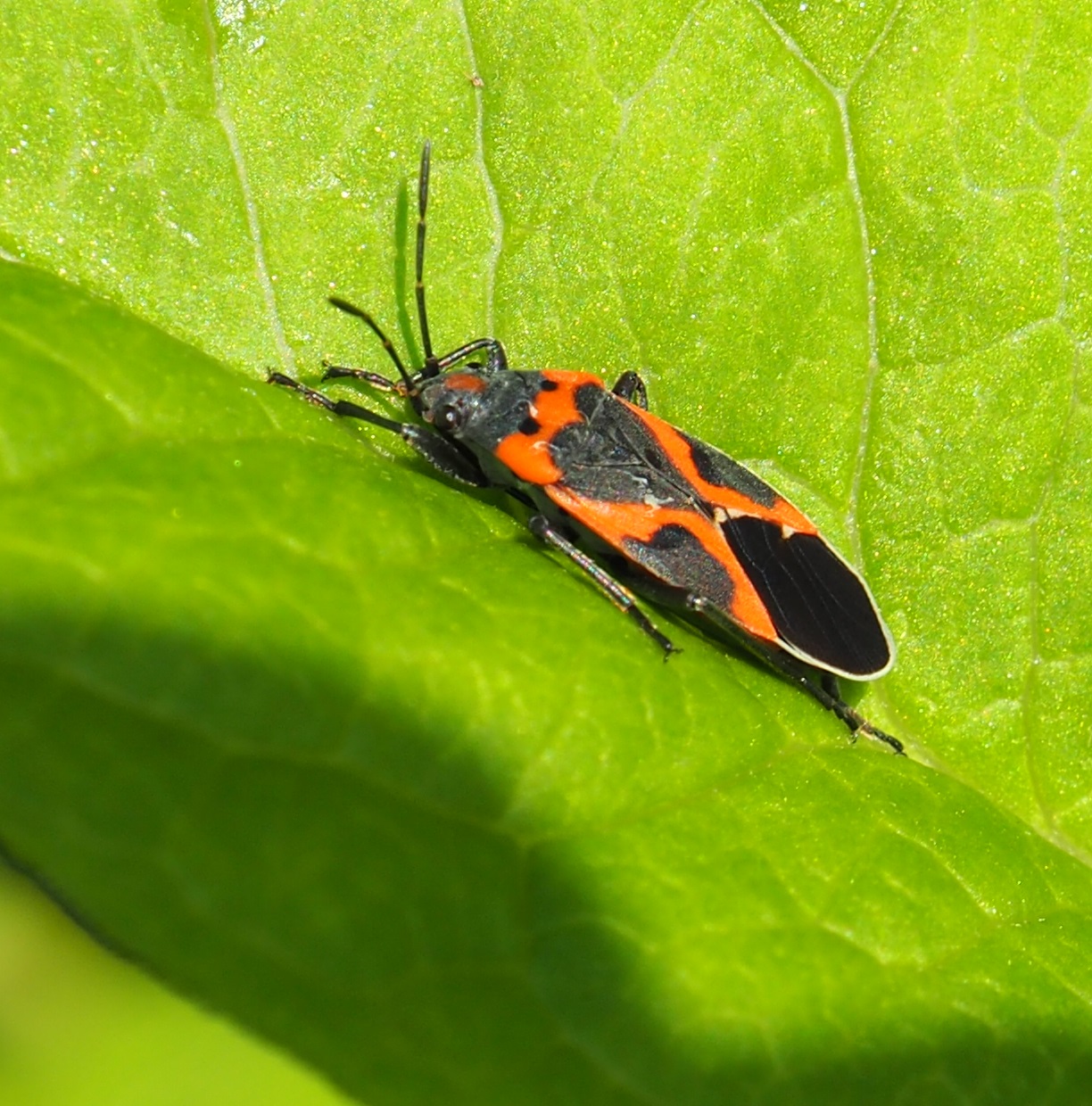
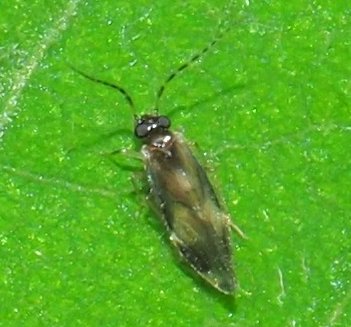
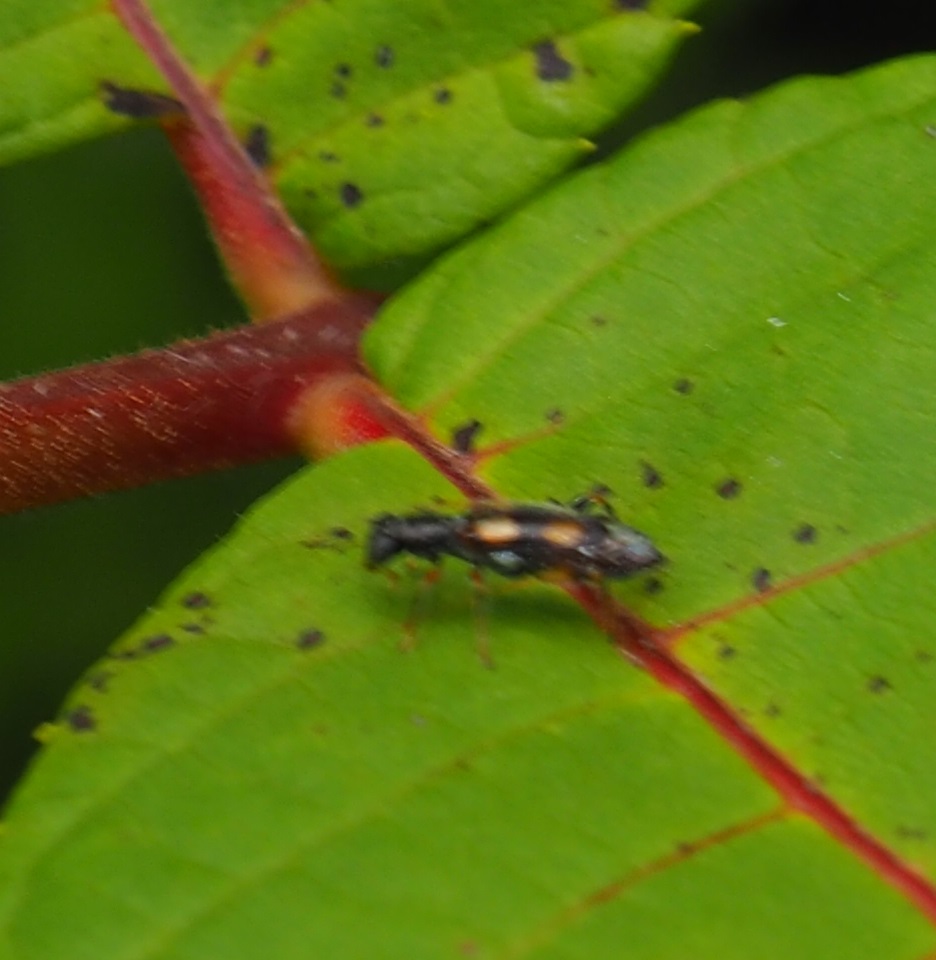
Here we see the shaving brush end of a young planthopper. And another possible. Then two little white fluffy critters that MIGHT be young planthoppers.
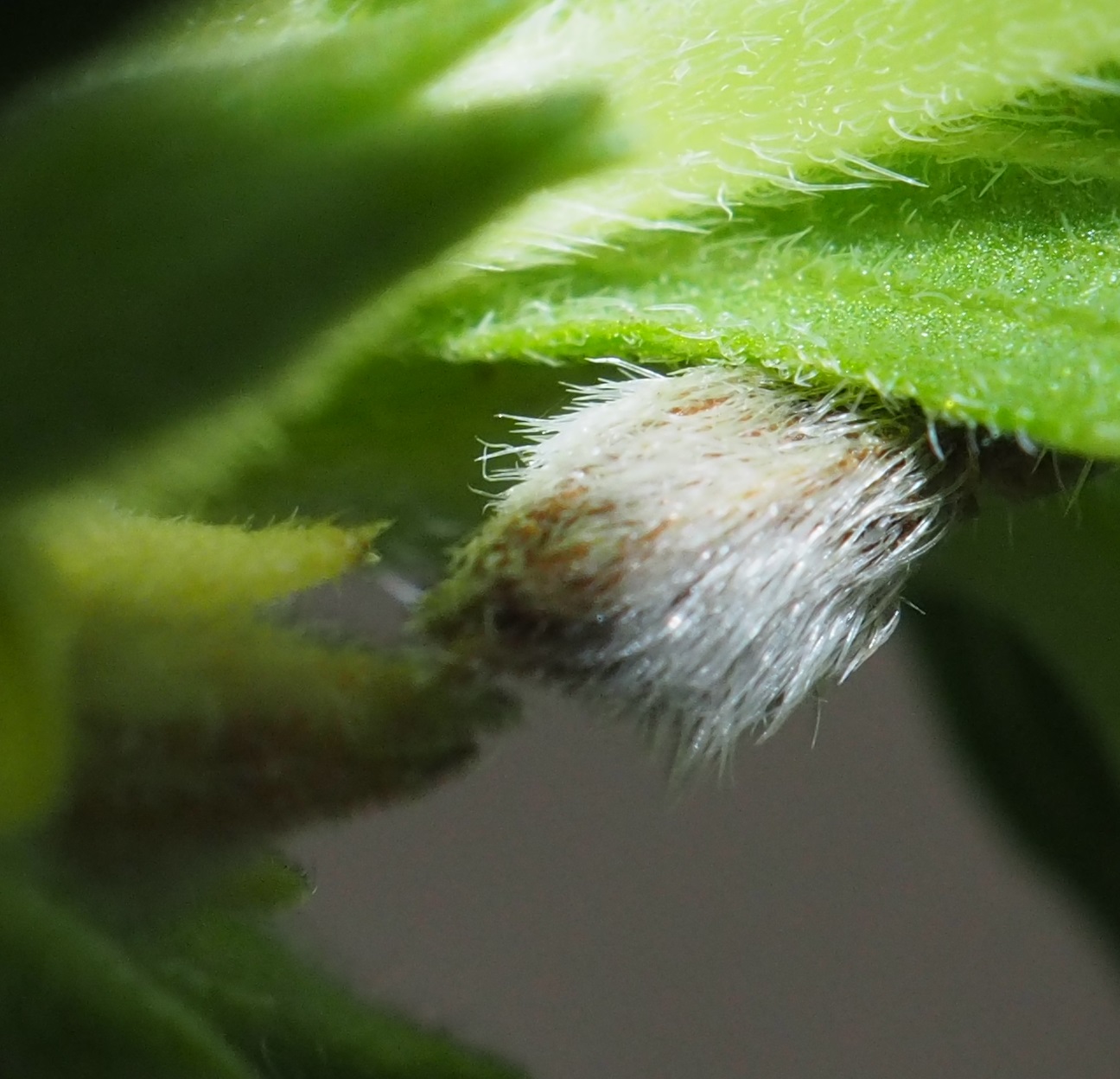
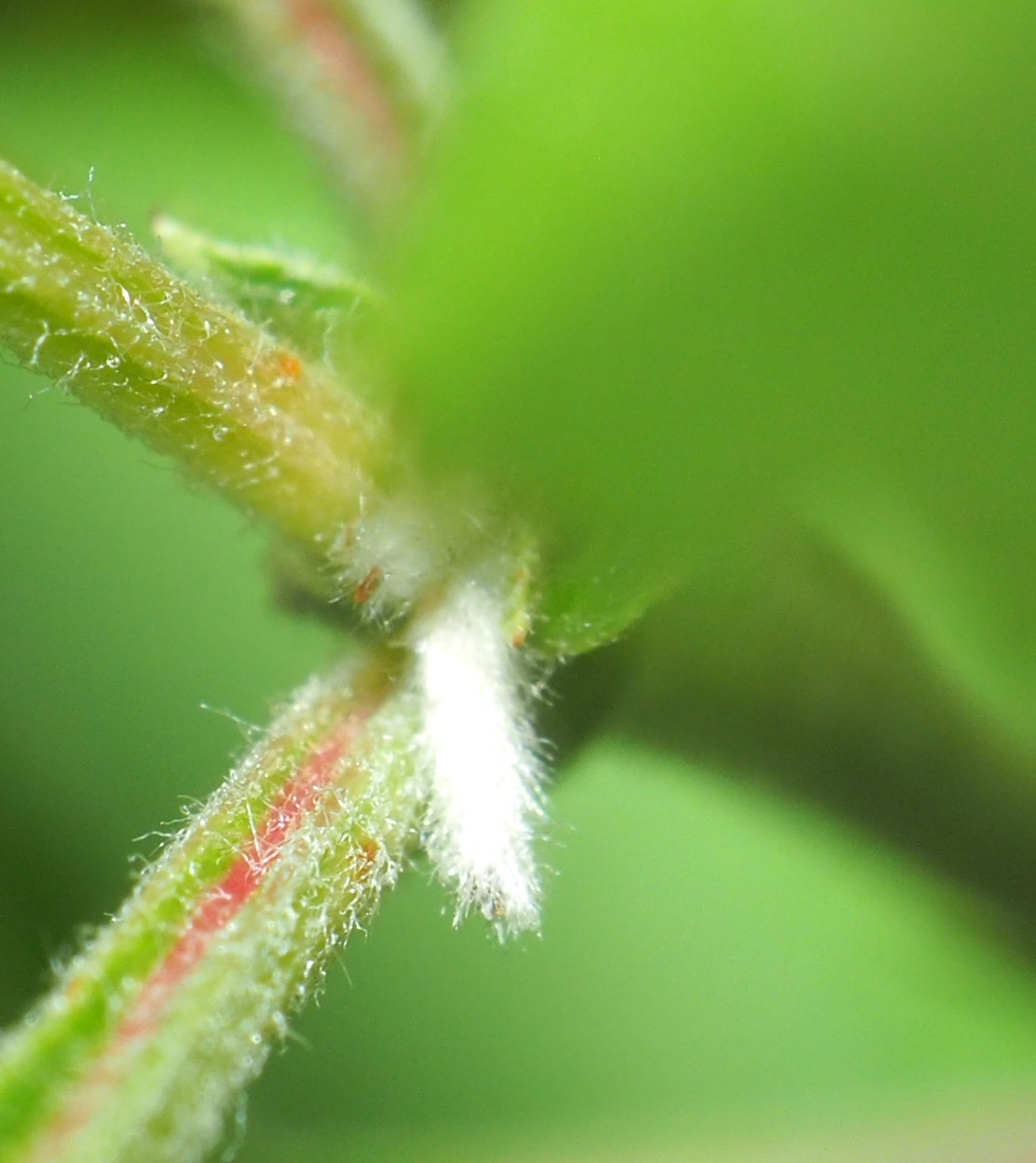
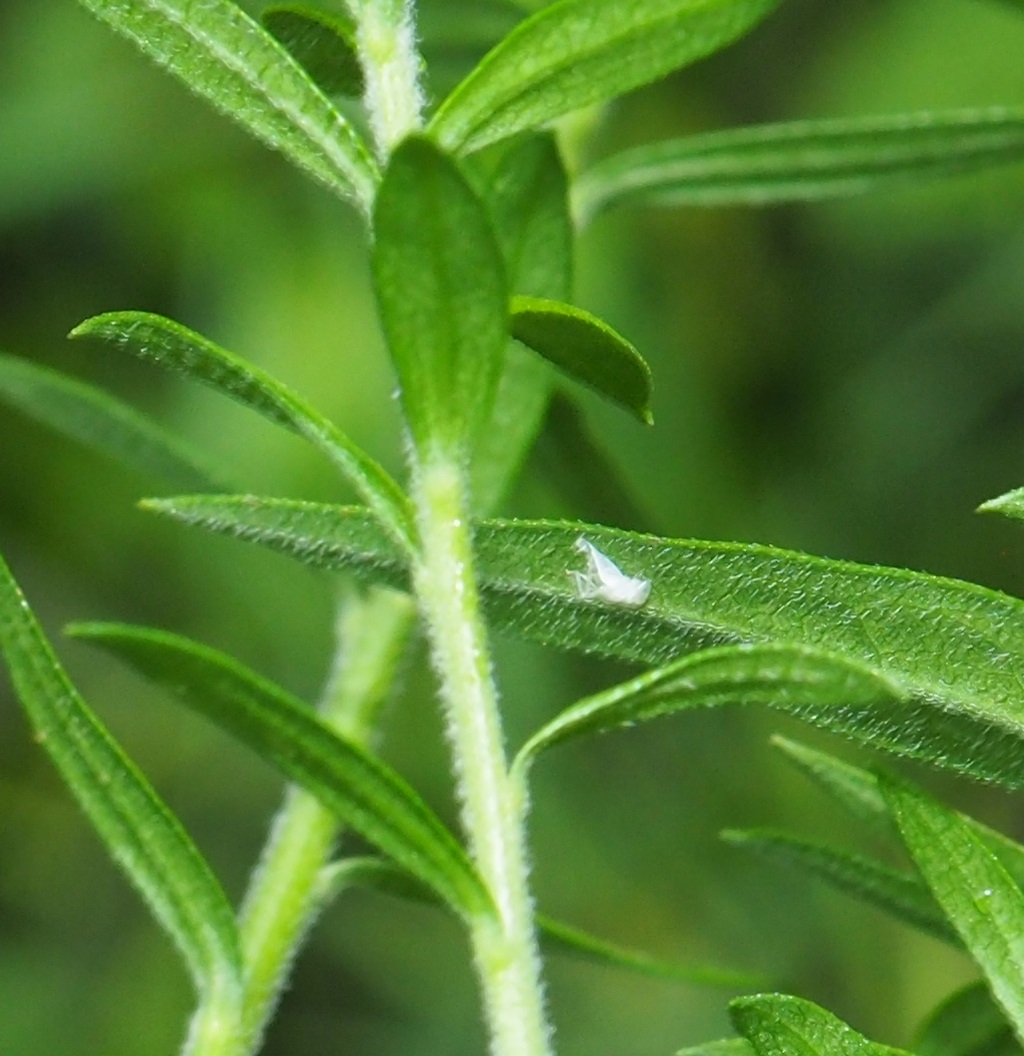
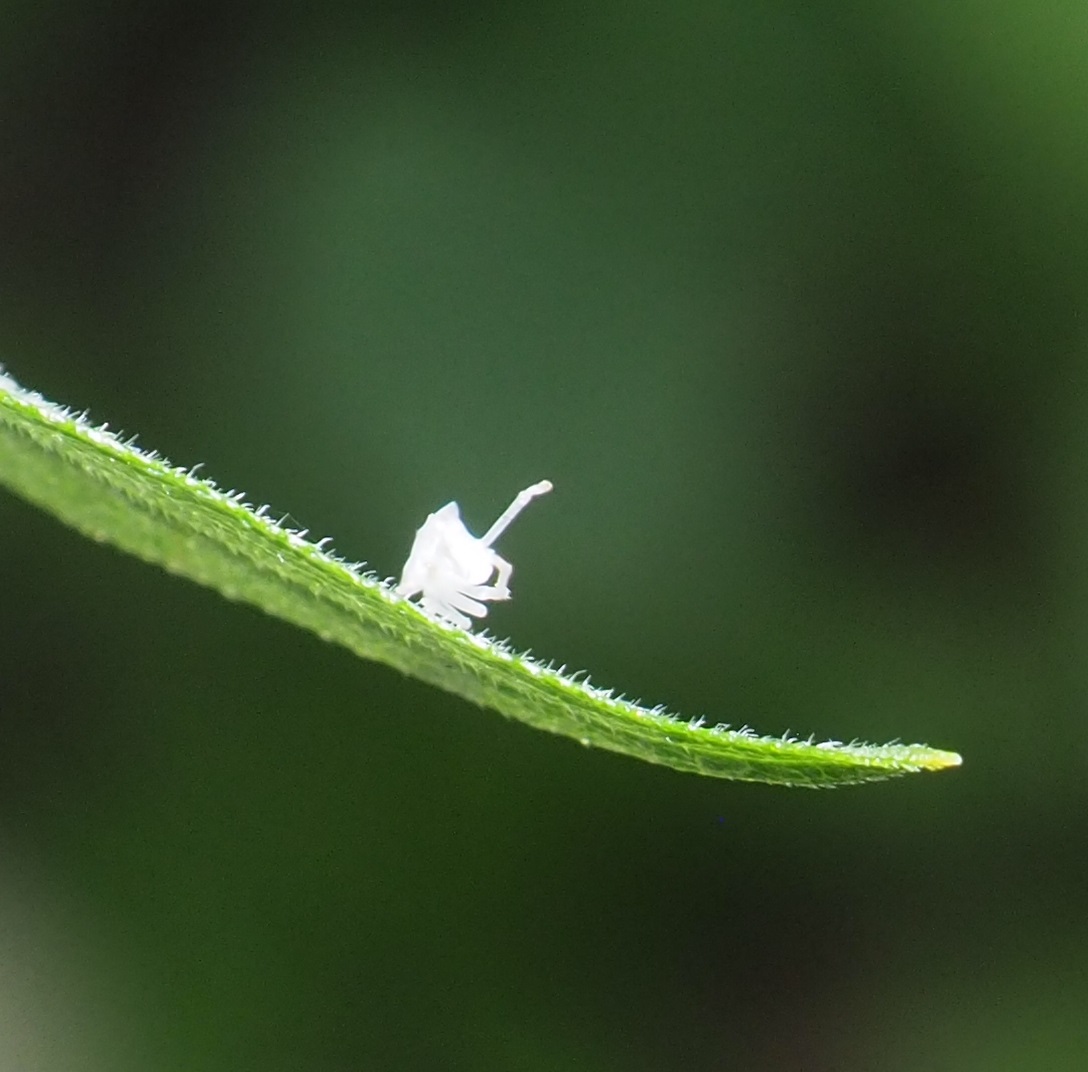
This first one is a big case, probably filled with spider eggs. The second is a little stash of eggs, which may be stink bug eggs. And this last little mass may be a fungus or it may be mystery poop.
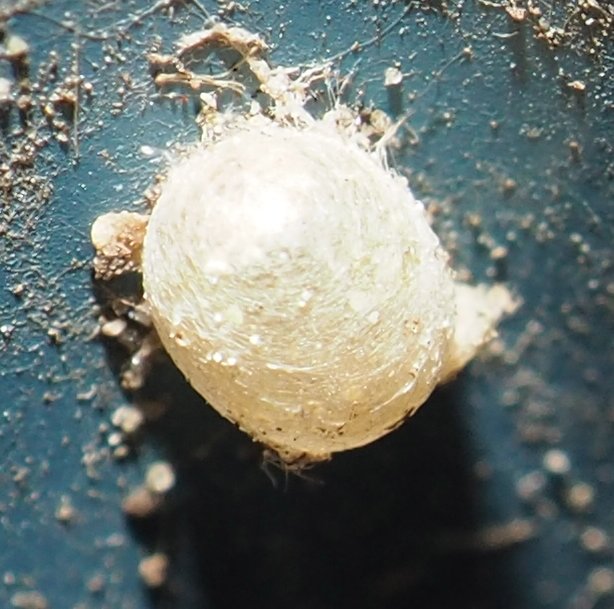
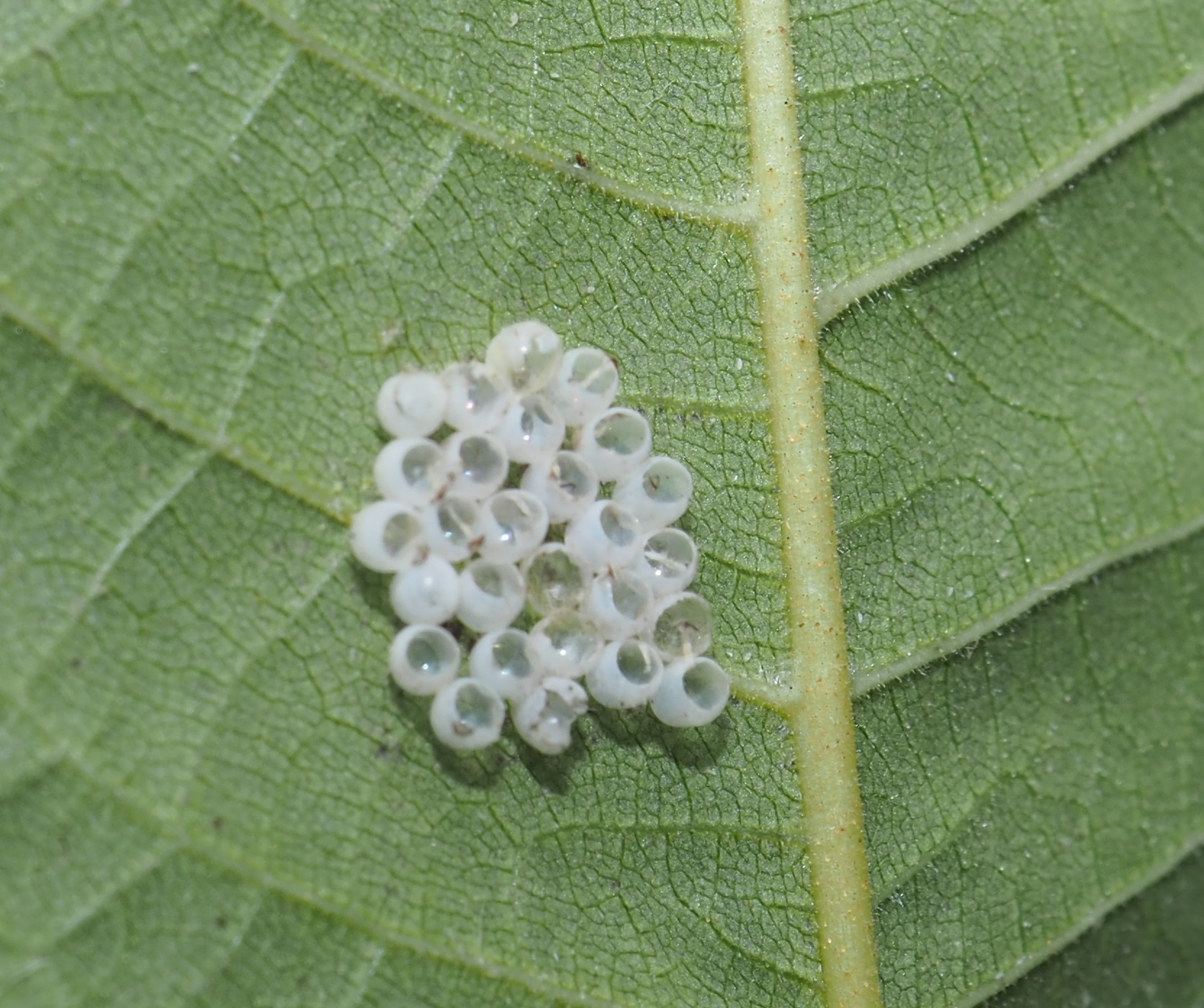
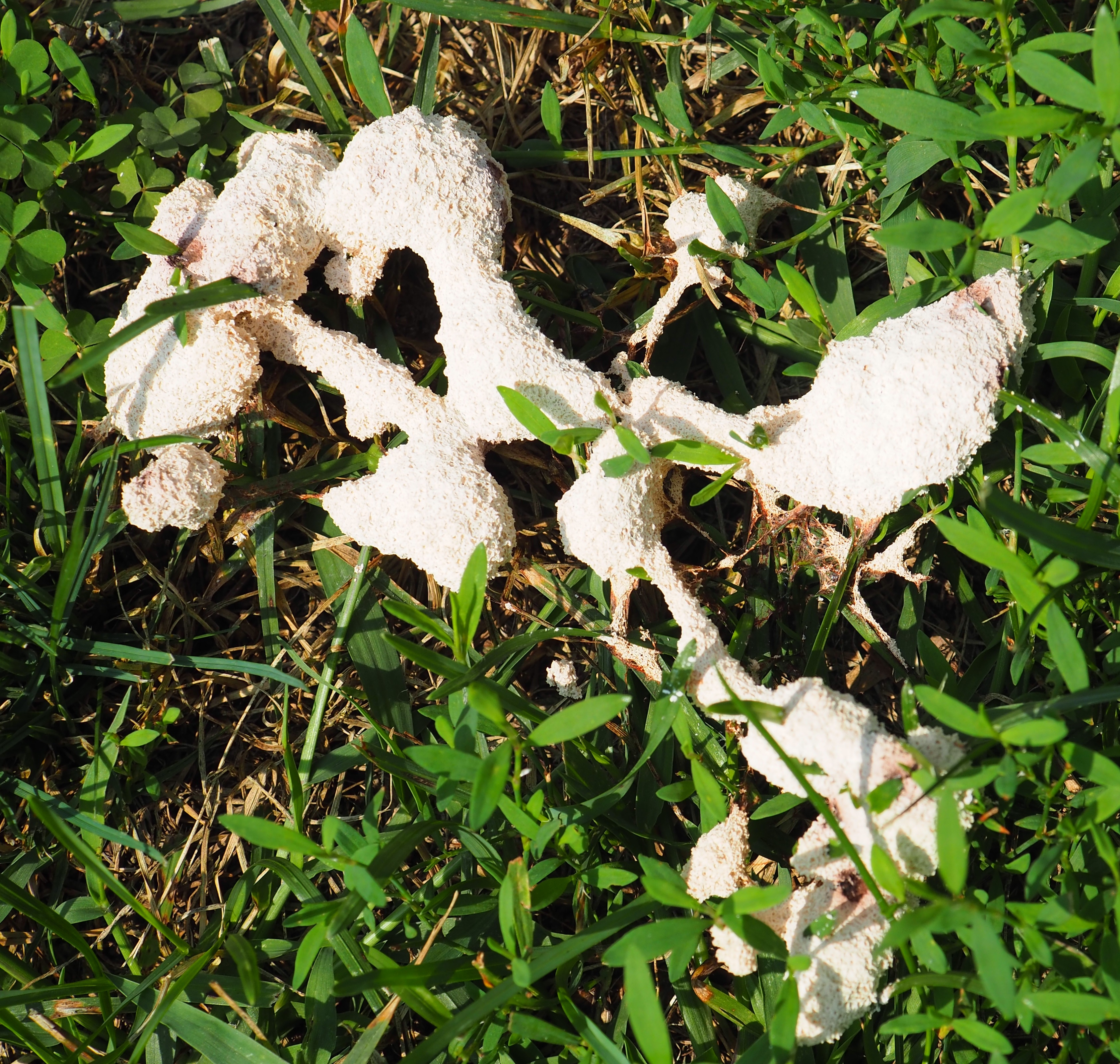
Finally, we enter the Palace of Flies. First off, a Gall Midge. Then, a Hover Fly (Toxomerus politus), first time I've noticed any of that pretty blue. Third is a Woodlouse (Pillbug Eater) female (the white tips of the wings make it seem to have little bites eaten out of the wings).

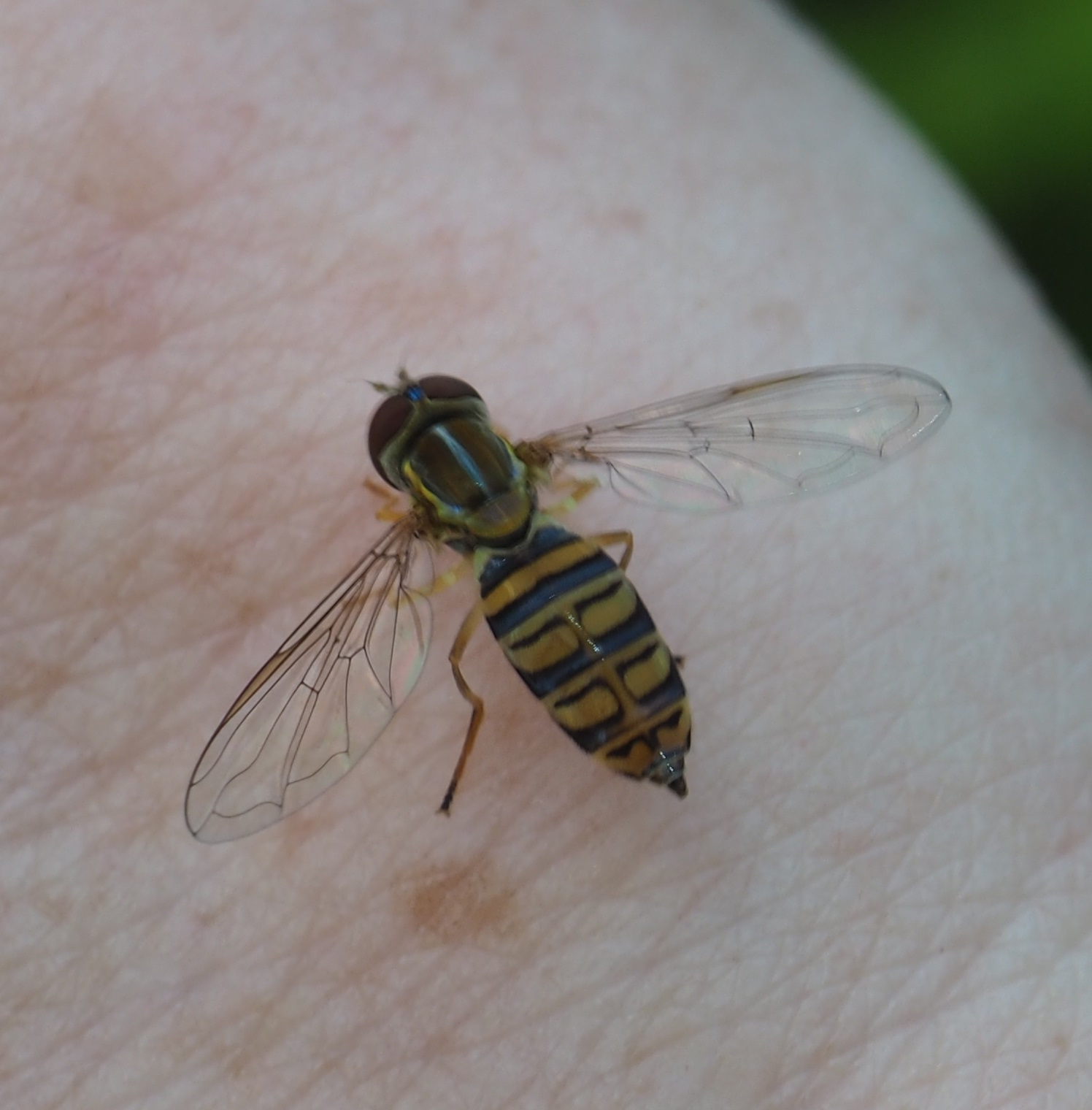
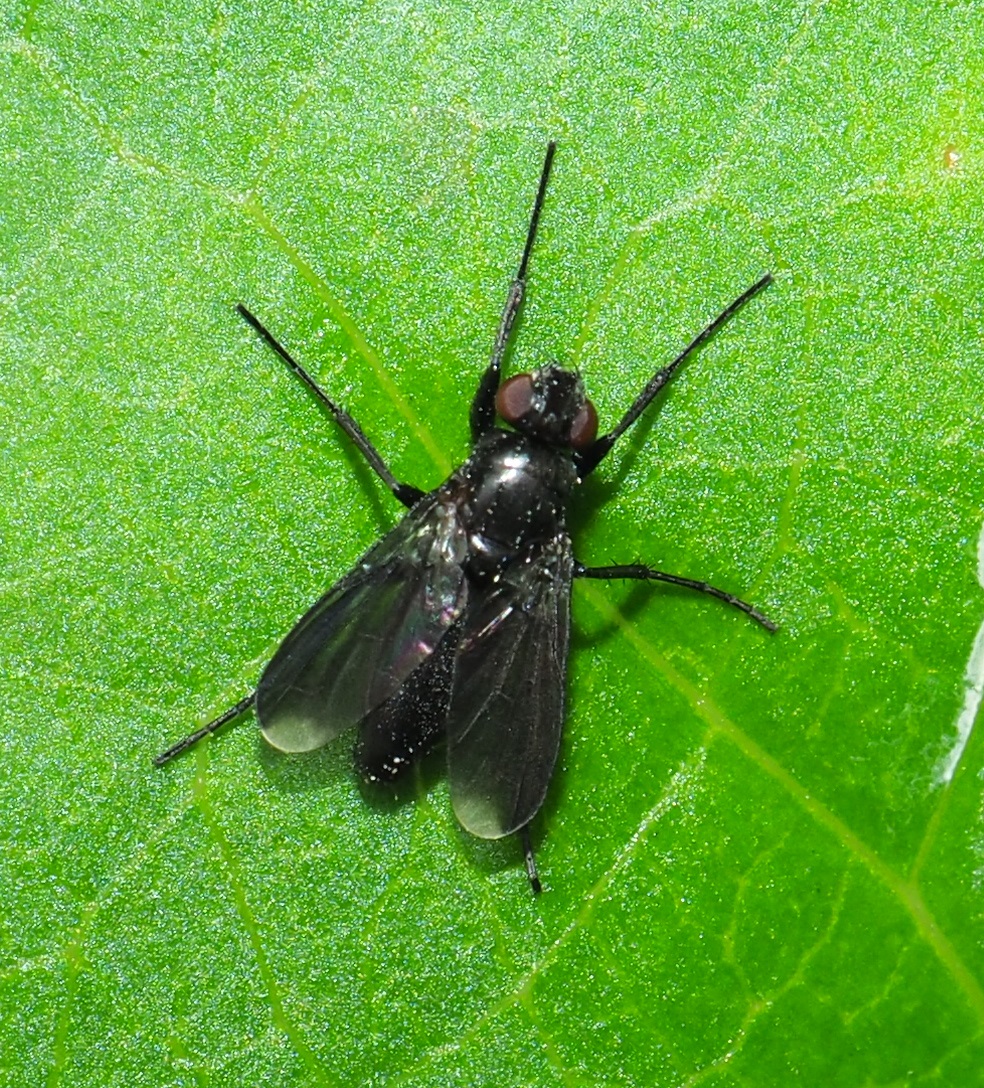
Two pictures of one moth fly. The second is a comical look at one flying. Third might be a Minettia lupulina.
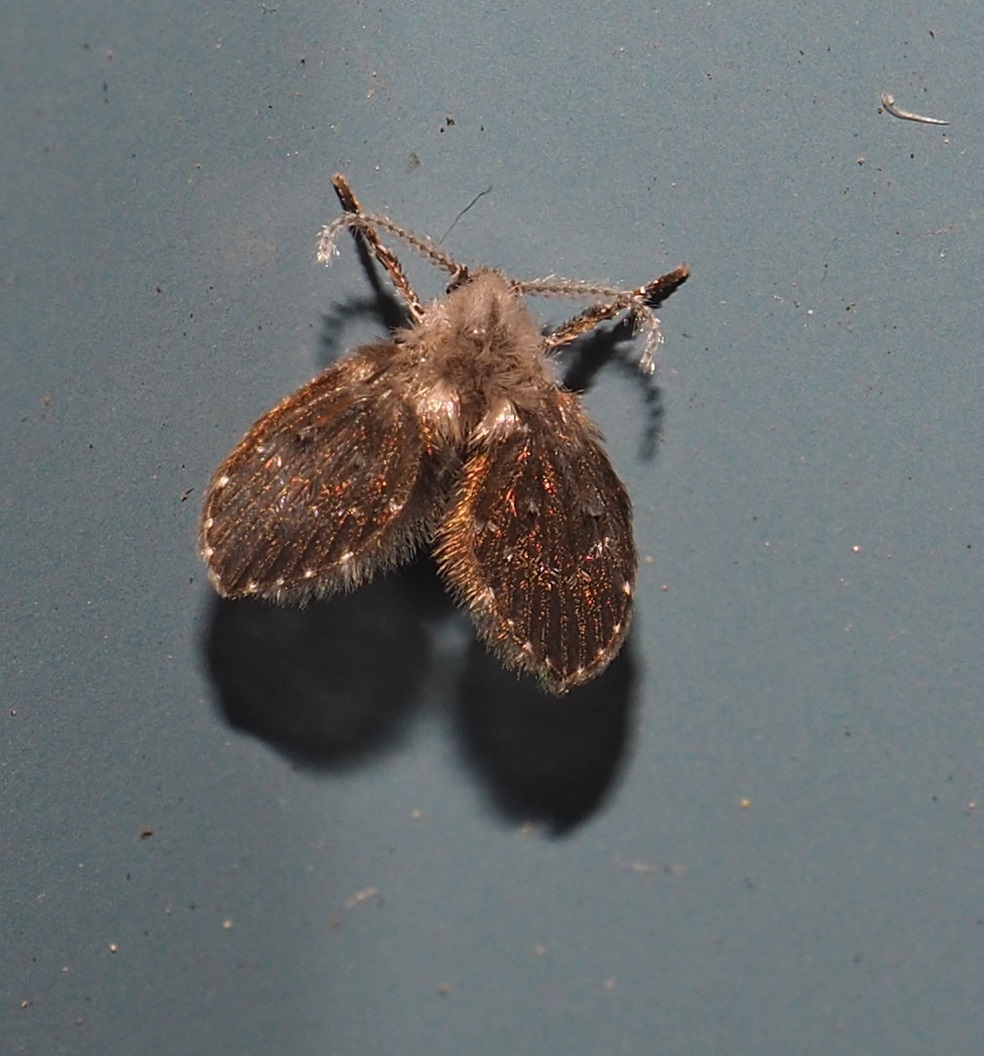
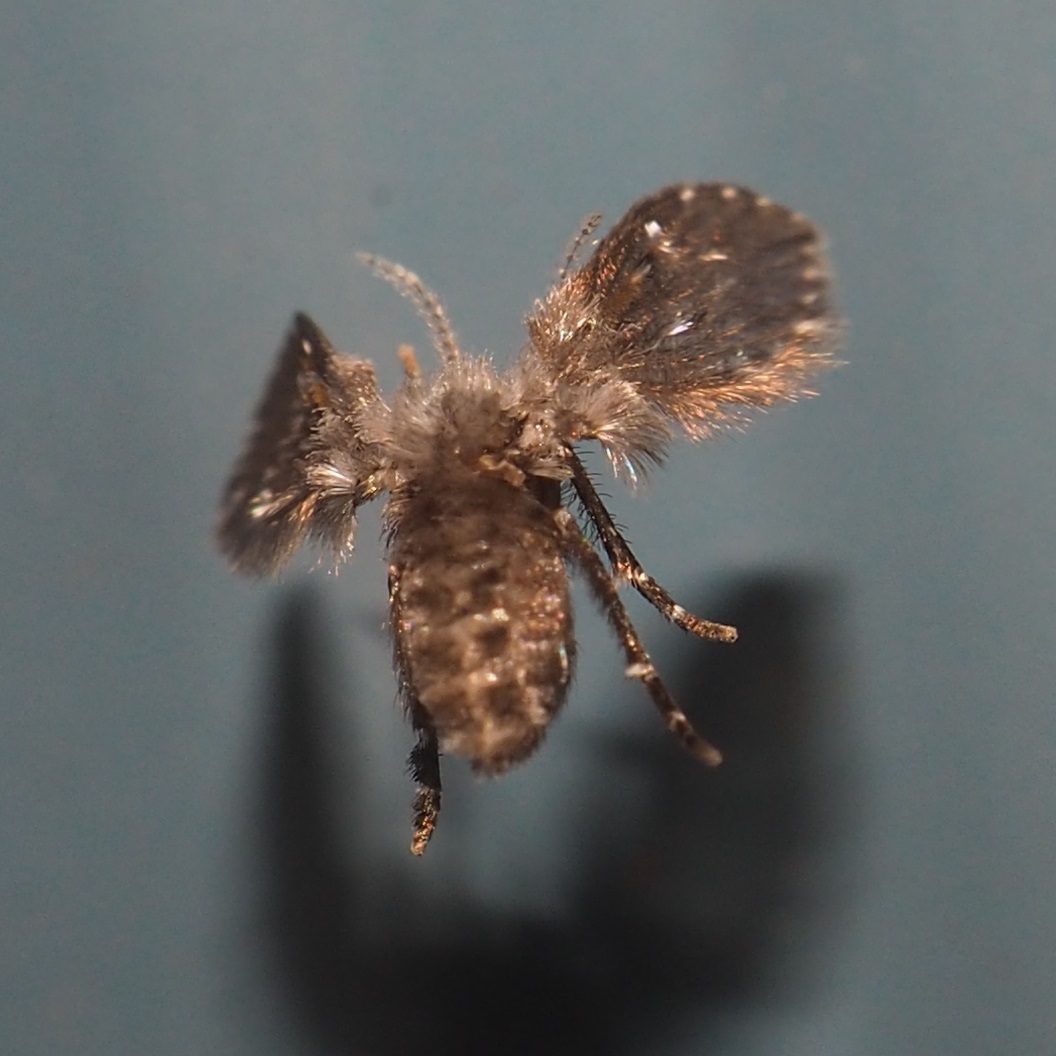

Here are a few of the colorful long-legged flies.
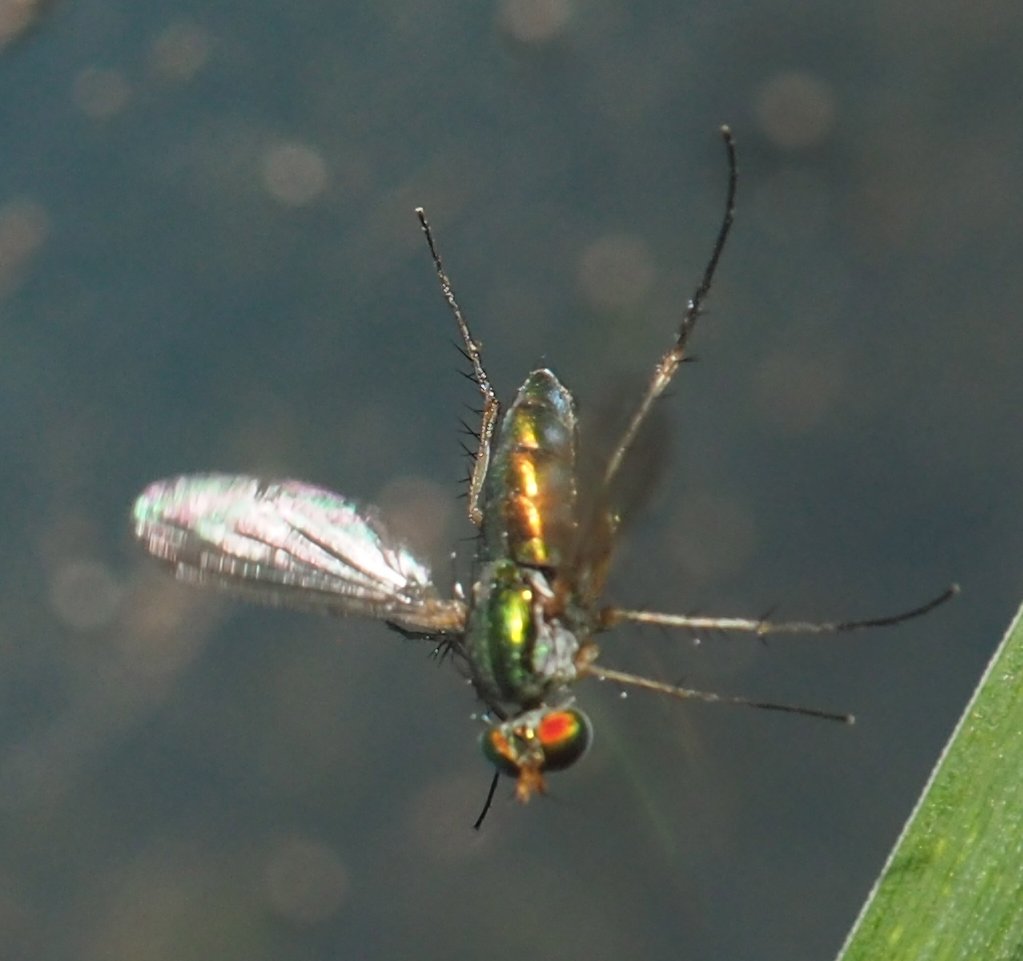
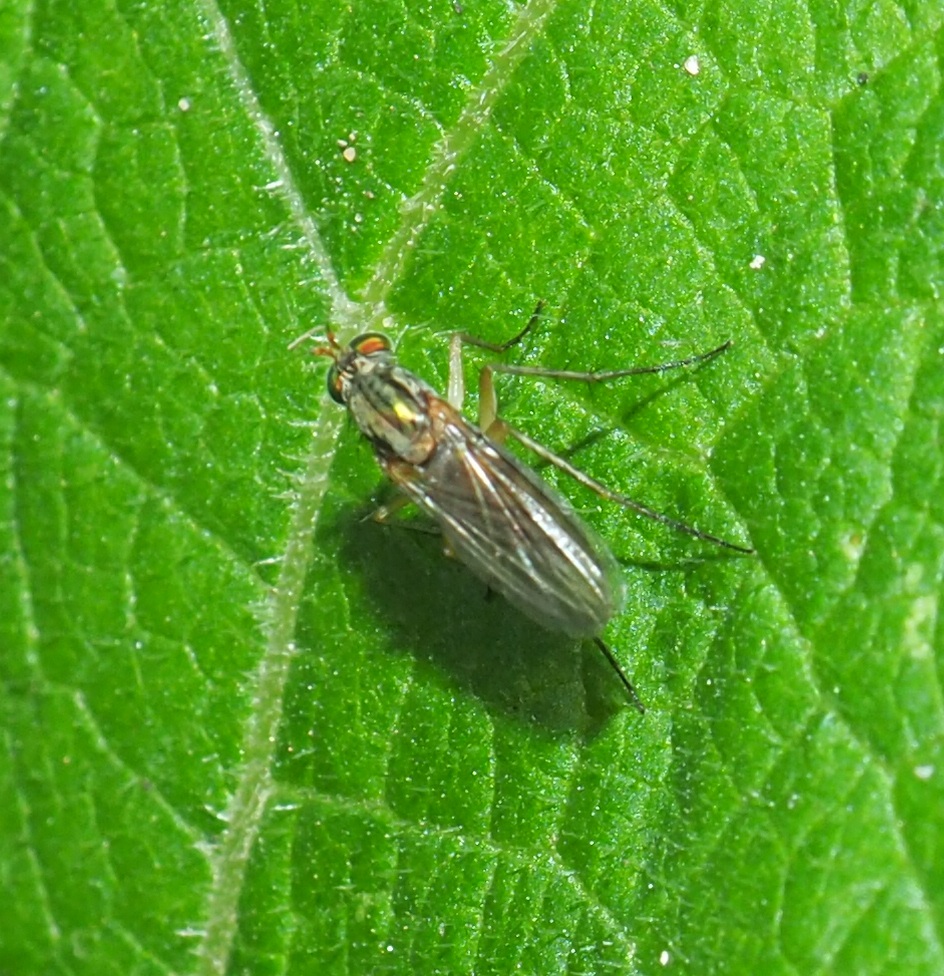
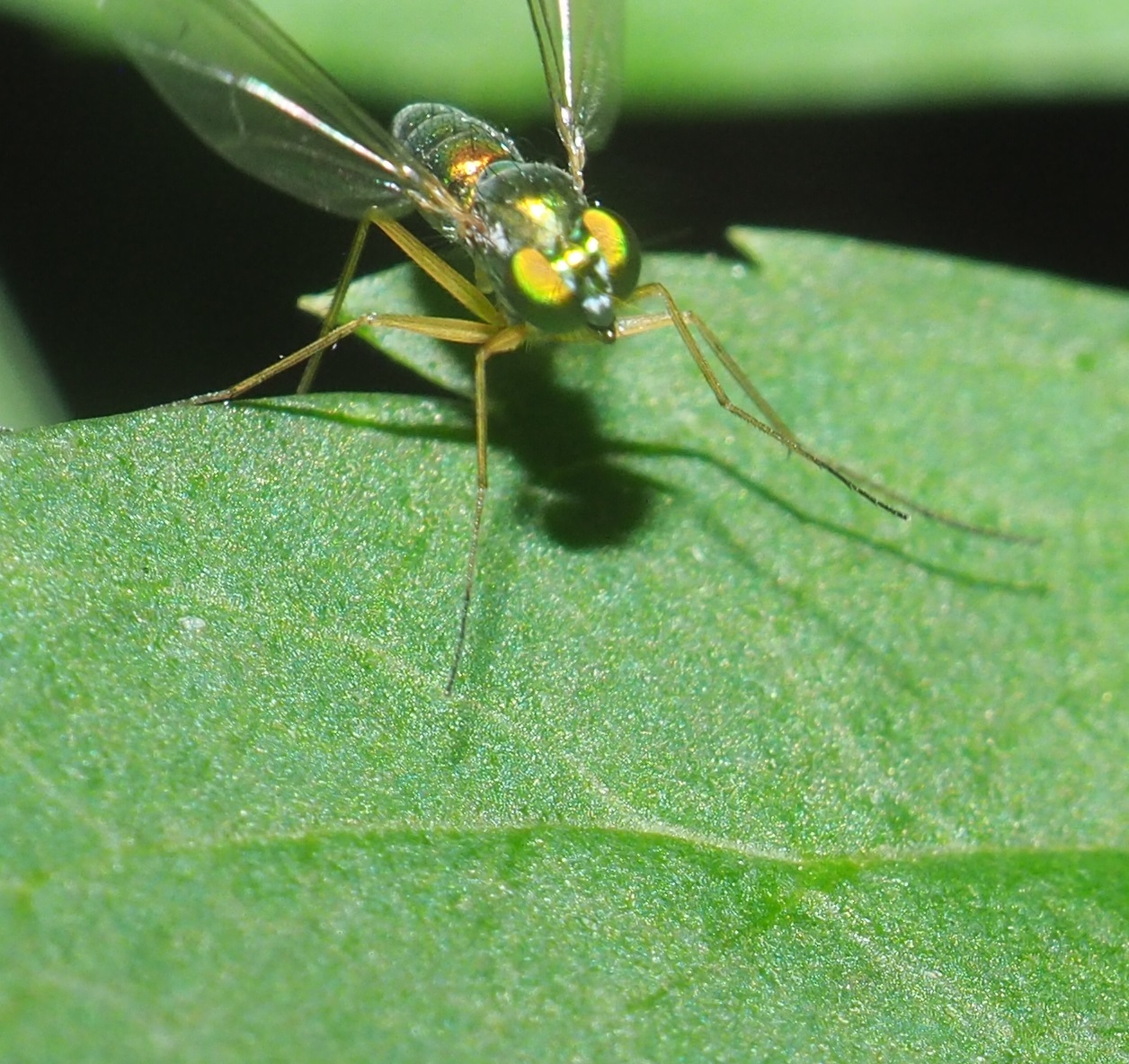
A few harvestmen.
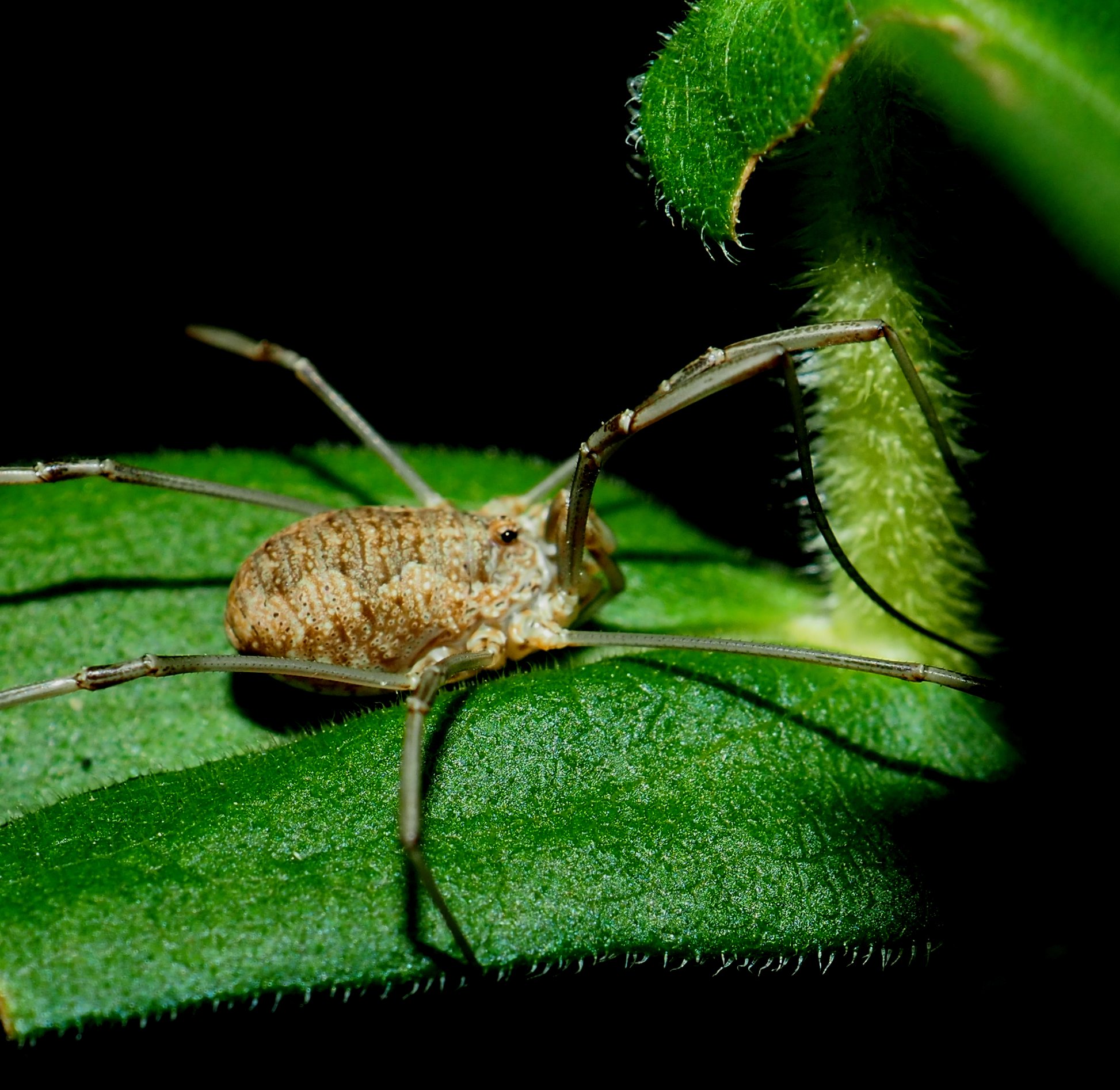
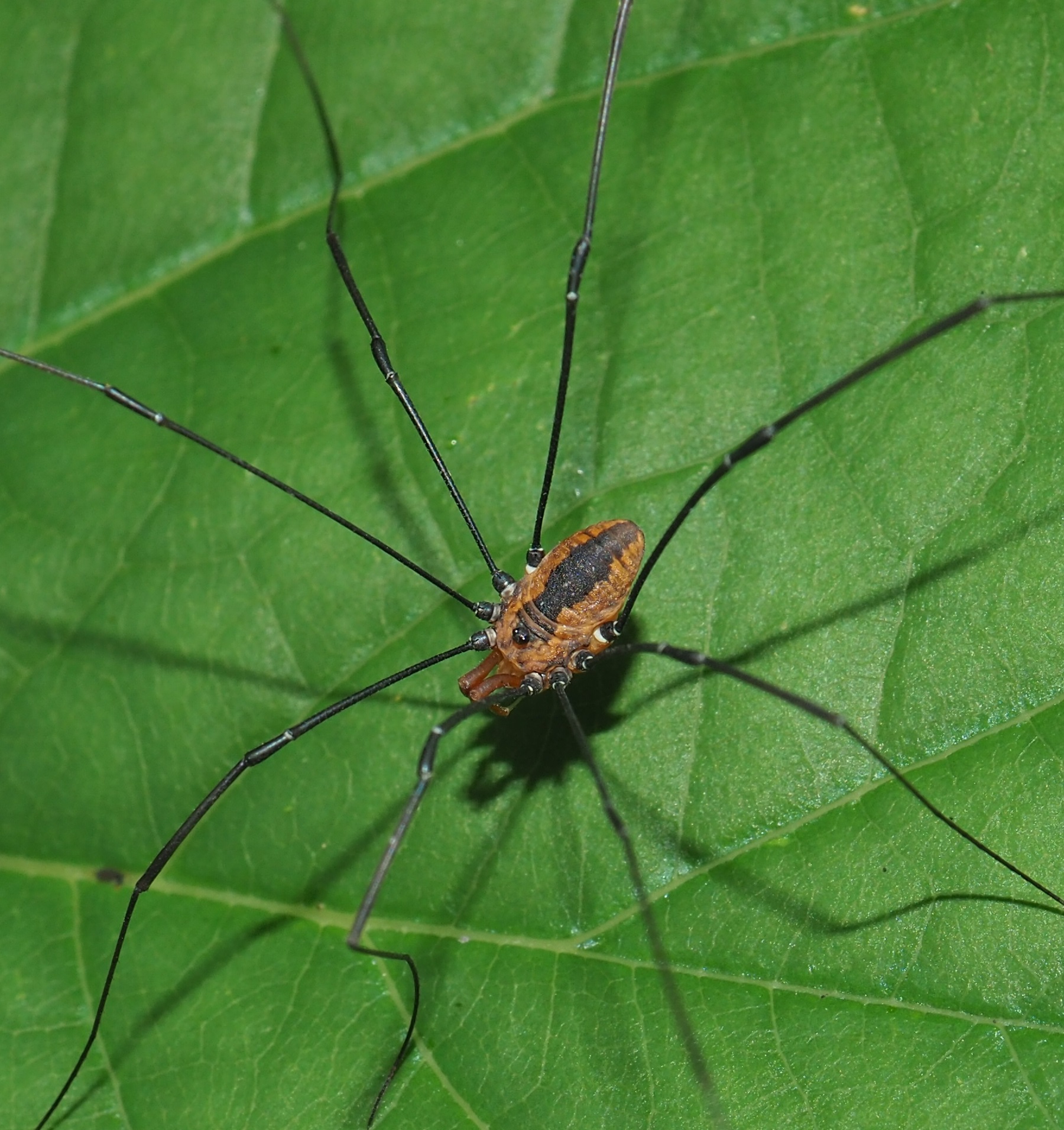
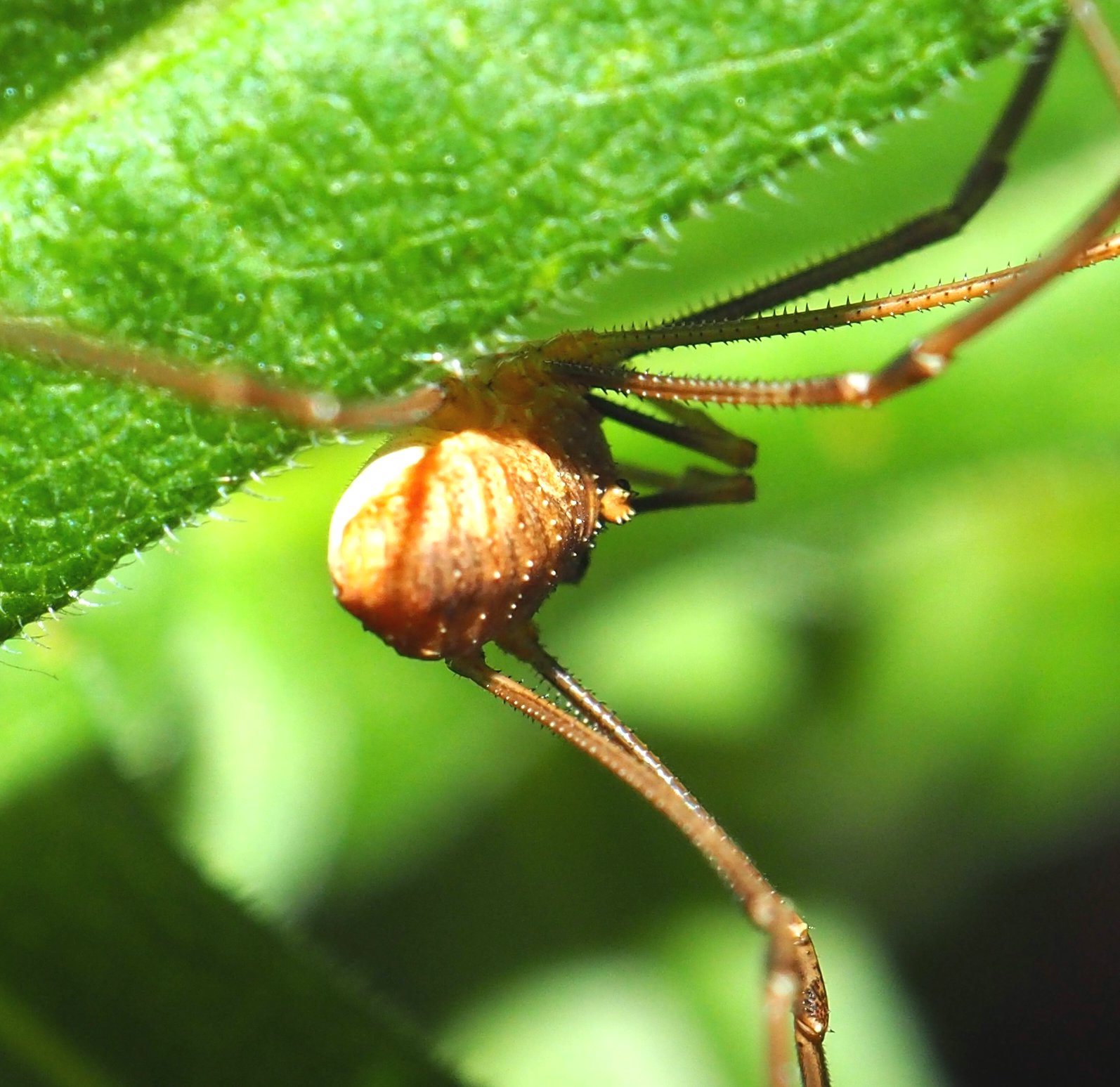
Here are some little moths.
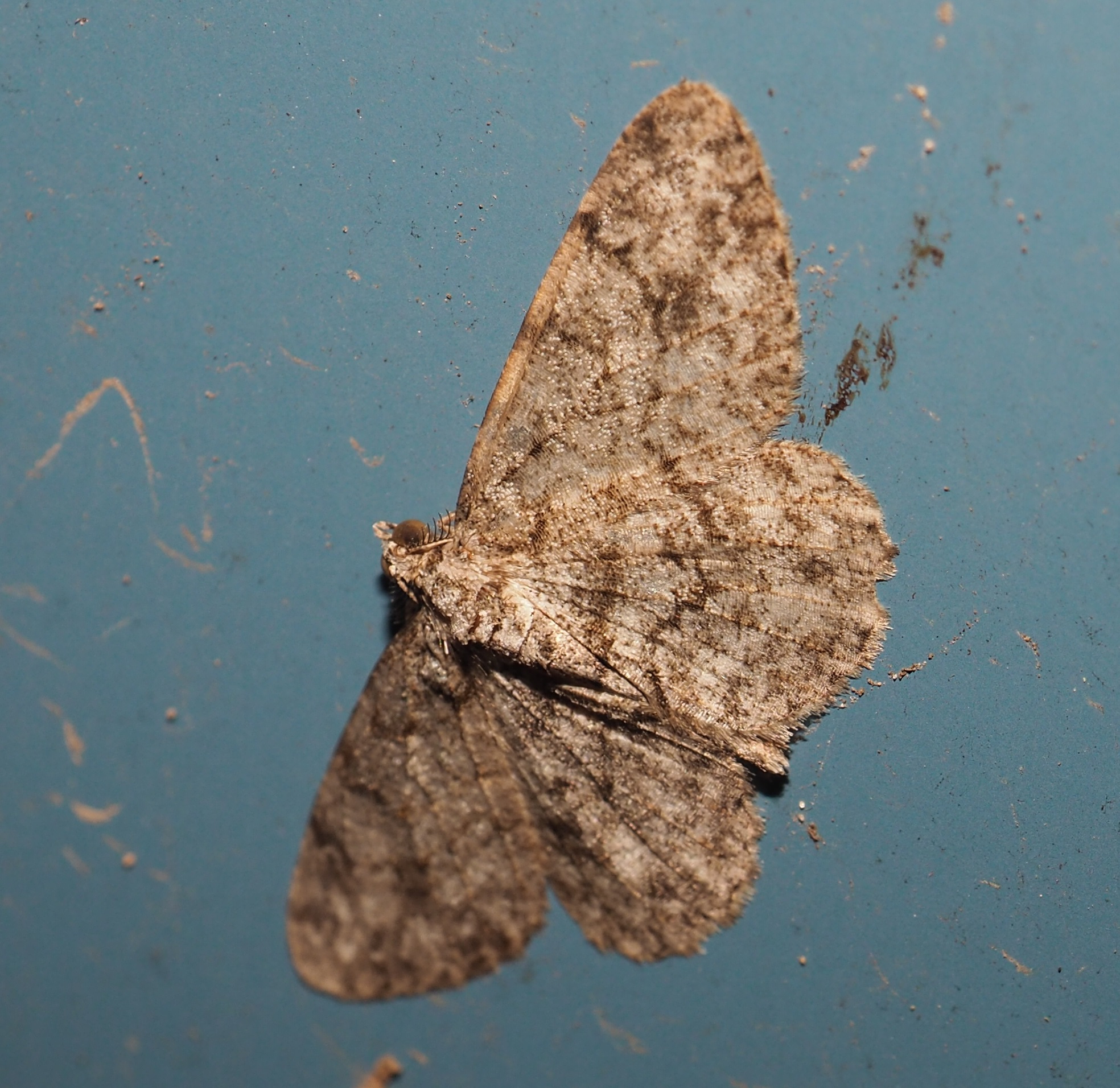

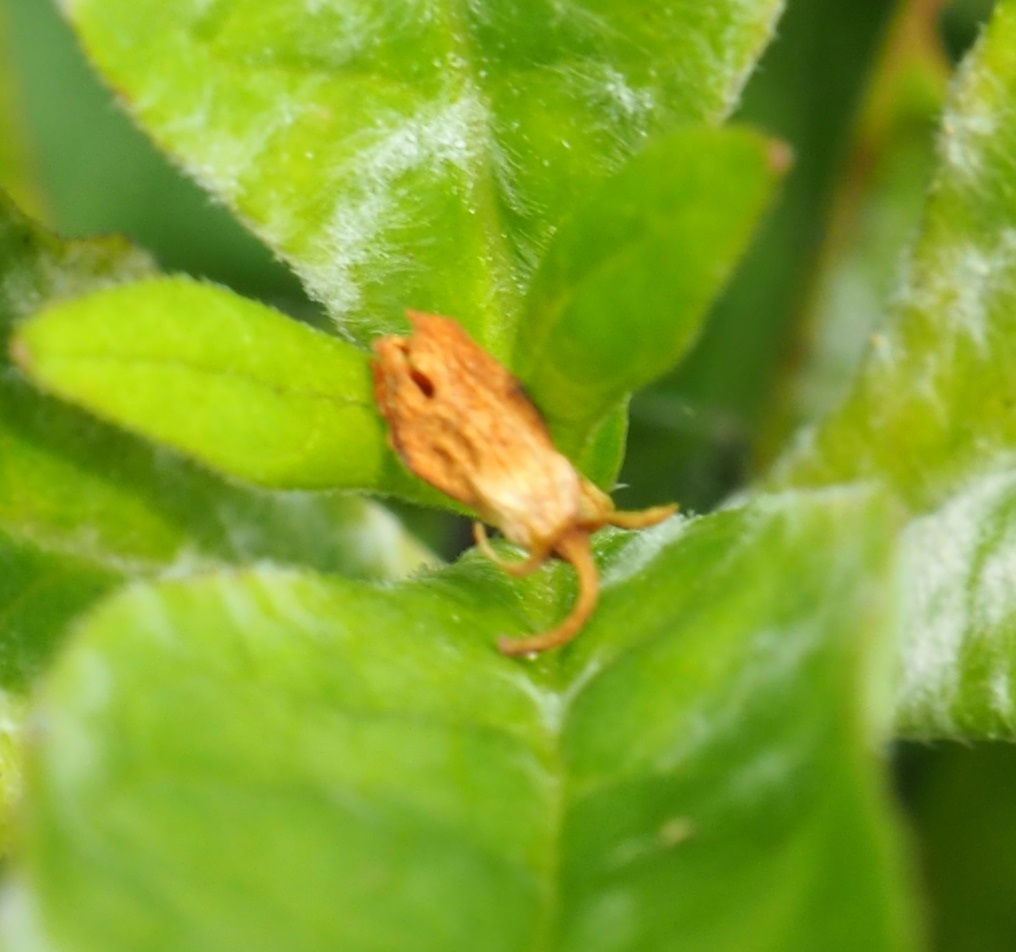
Here are the caterpillar of the Hickory Tussock Moth and a tiny looper (geometrid moth caterpillar) or inchworm. Third is a pretty brown butterfly about the
size of a skipper. Last is a Lepidopteran, but it does look a lot like a spring roll too. I was told it was a butterfly or moth by a fellow at iNaturalist.org. I'd never have guessed it.
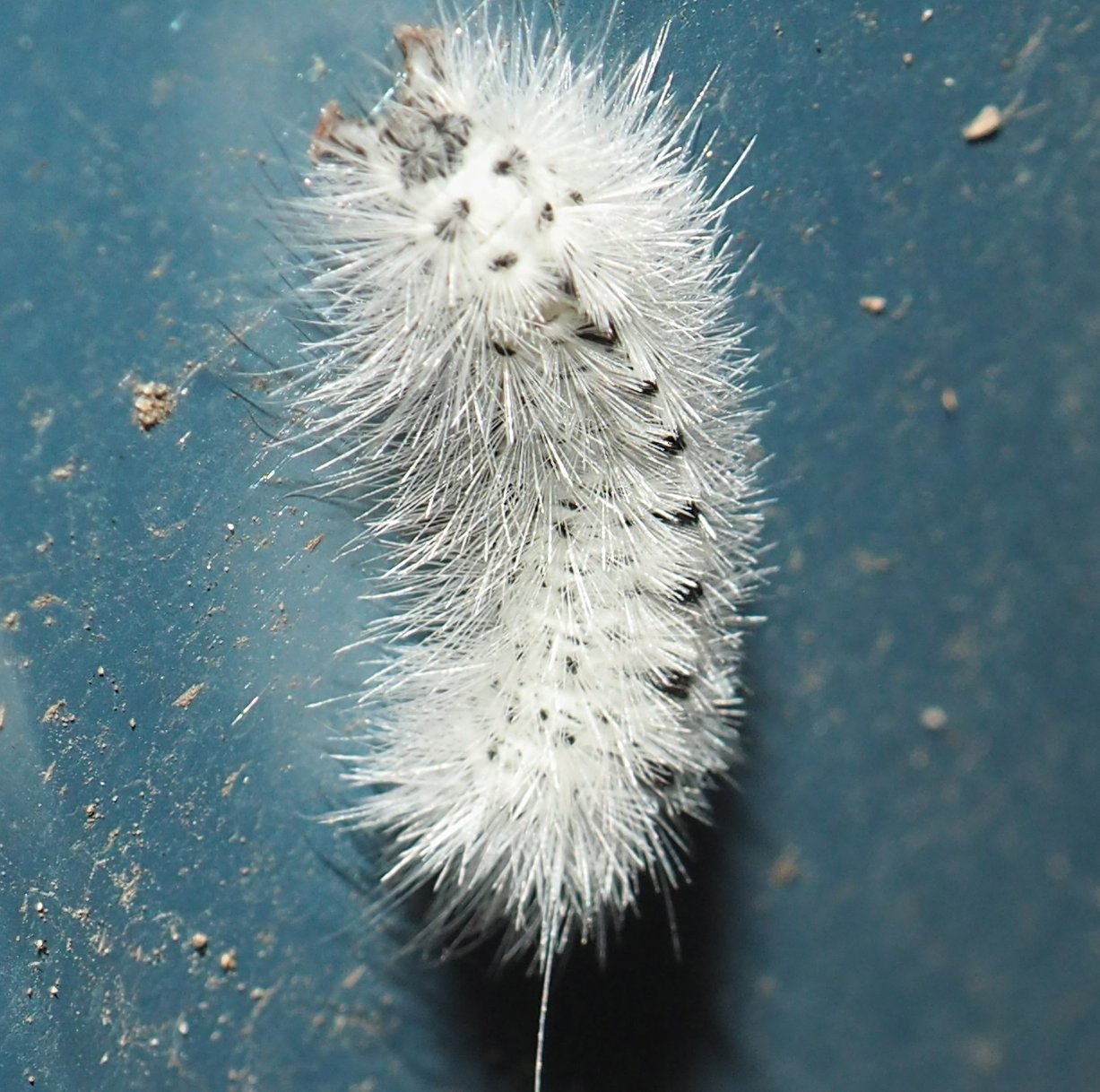
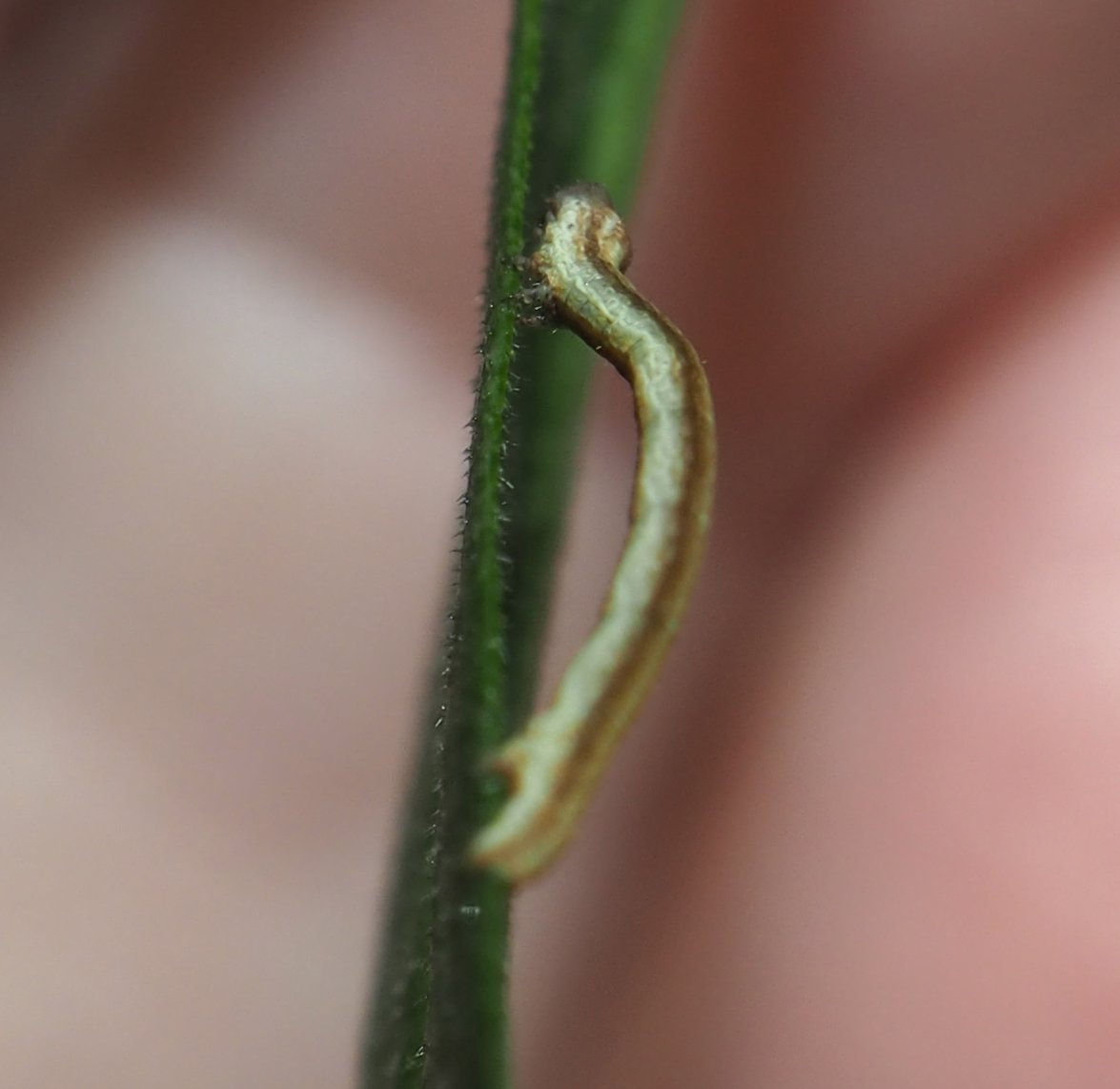
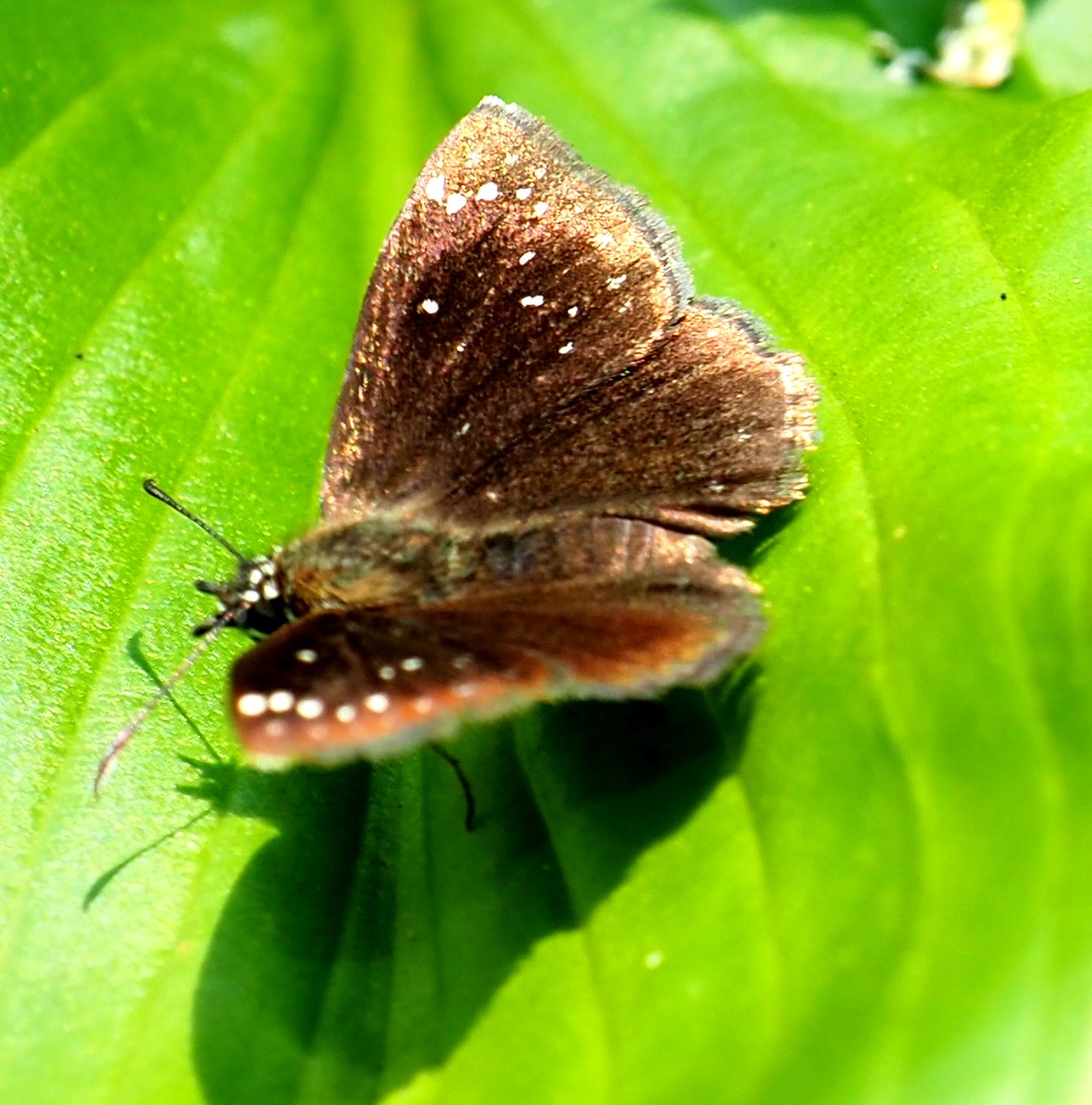
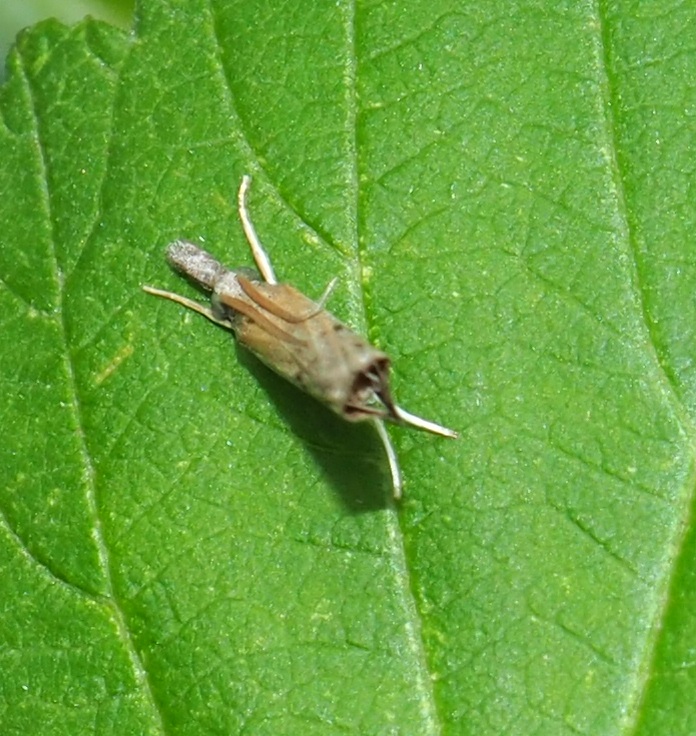
Here is a multi-image puzzle. For days I have been trying to decipher this "creature" (if it IS actually a creature). It looked to me as if two very odd subcreatures were mating and in fact at the end the ensemble came apart into two possible parts.
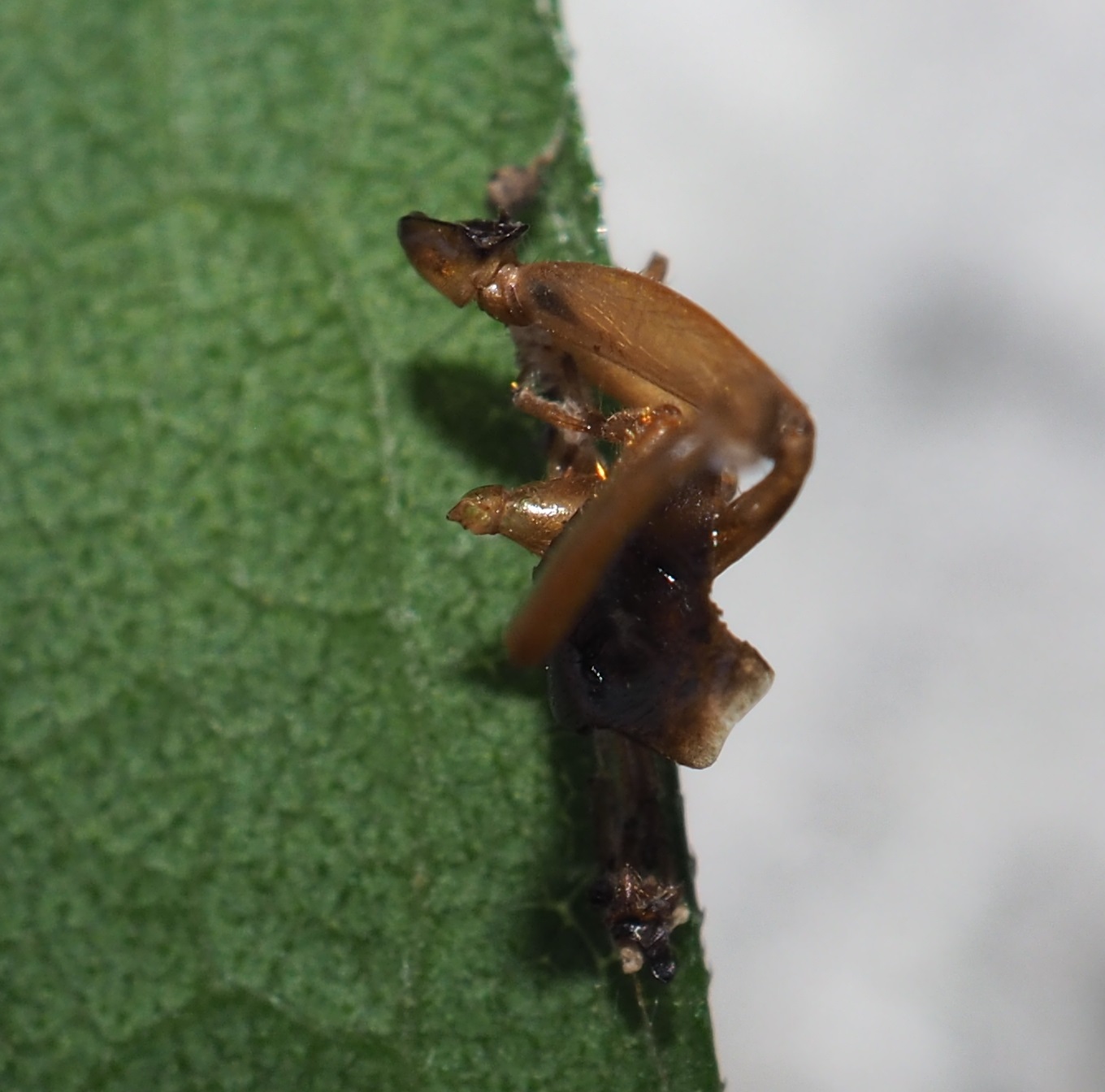
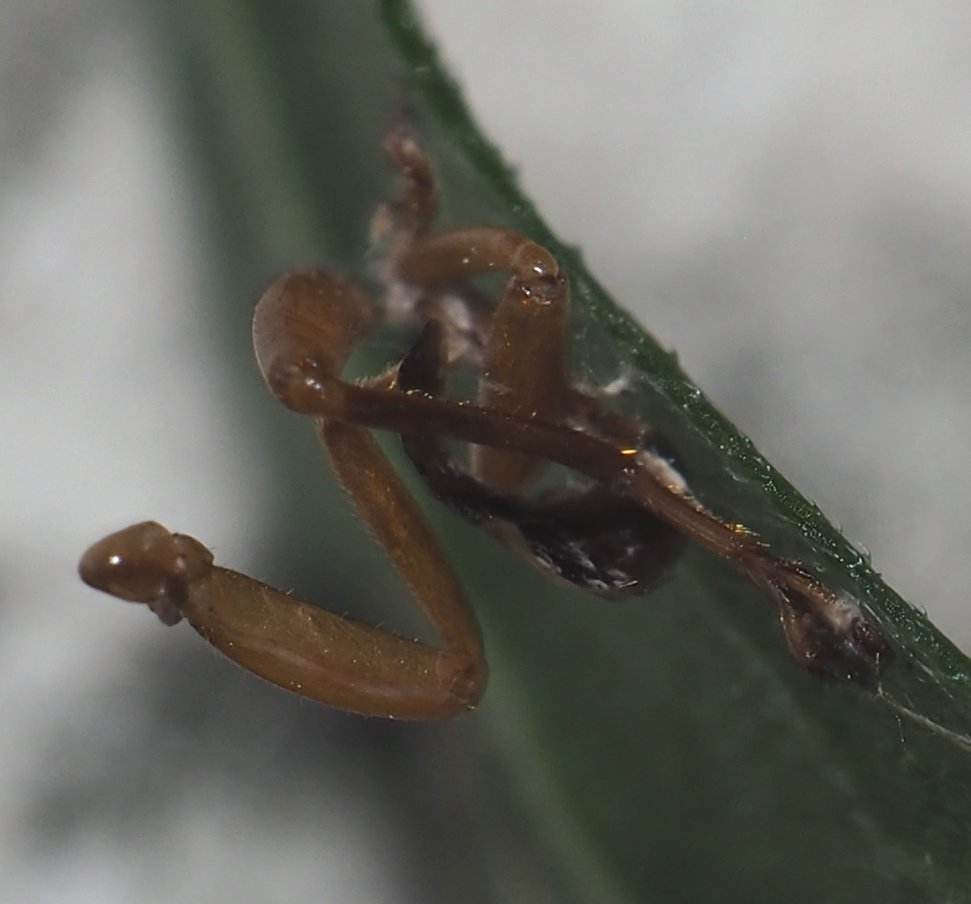
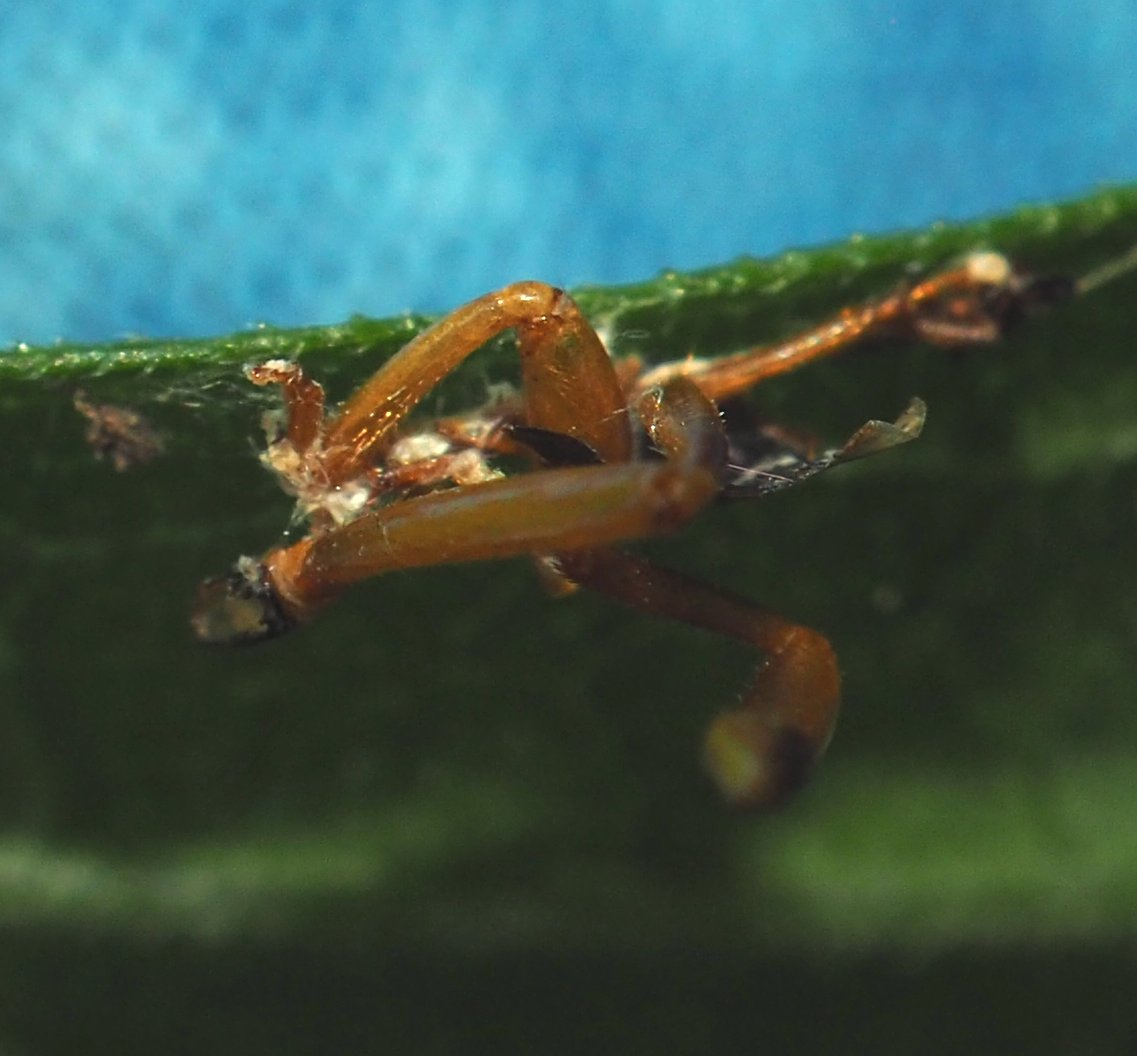
It seemed to me that the assemblage came apart into two creatures. I had a hard time getting both parts into one image. I got several replies from colleagues on Researchgate.net, saying it looked like a pile of insect legs with random bits of exoskeleton and some white bits that might have been mold. Then a couple of days ago I found what looked like one of the piles at the back of a photo of an earwig. I thought at first that the creature might have ensnared the earwig, but then when I called up all my older photos of earwigs I saw clearly in some of them that the earwig legs did look like the creature. So much ado about almost nothing.
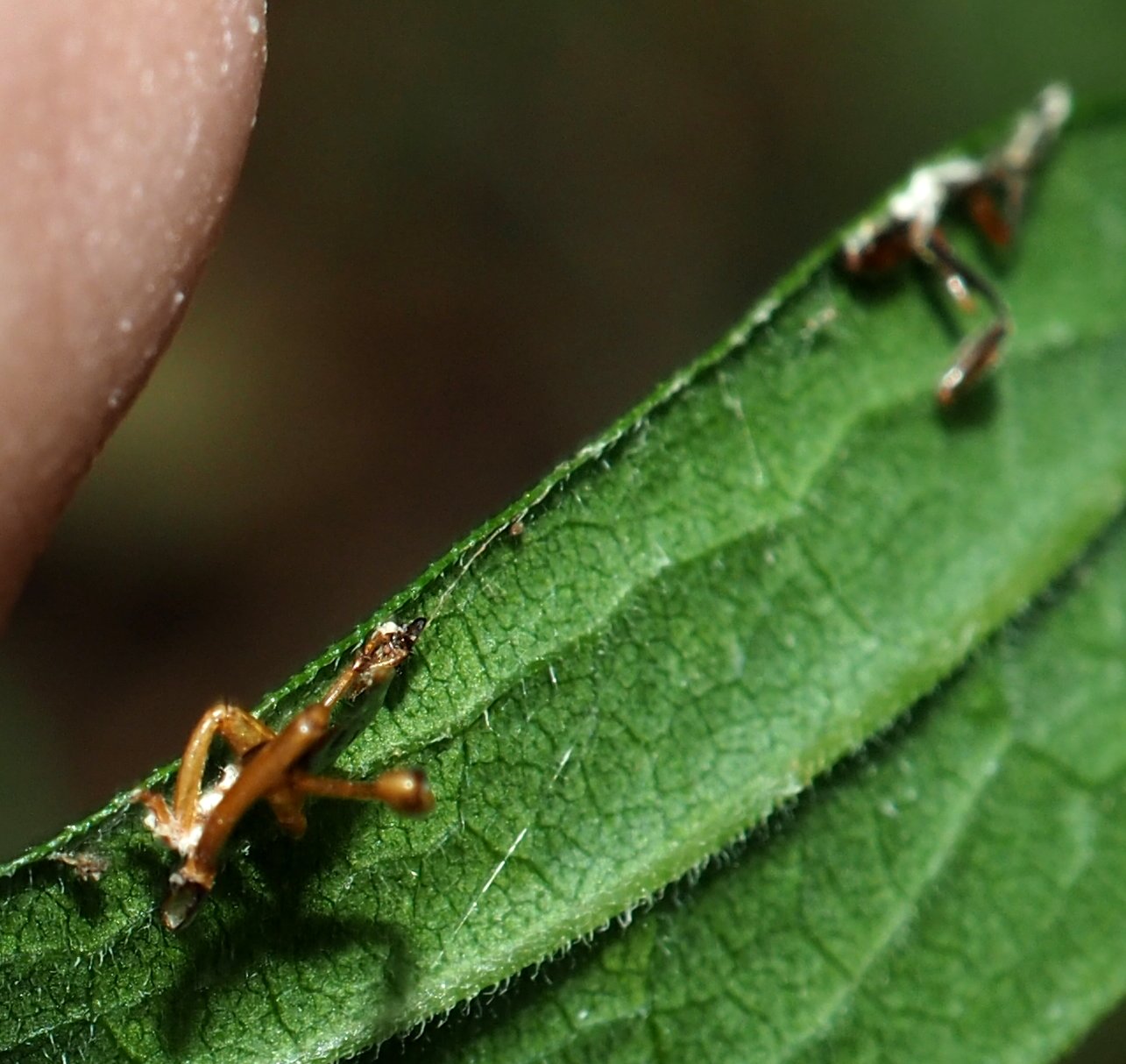

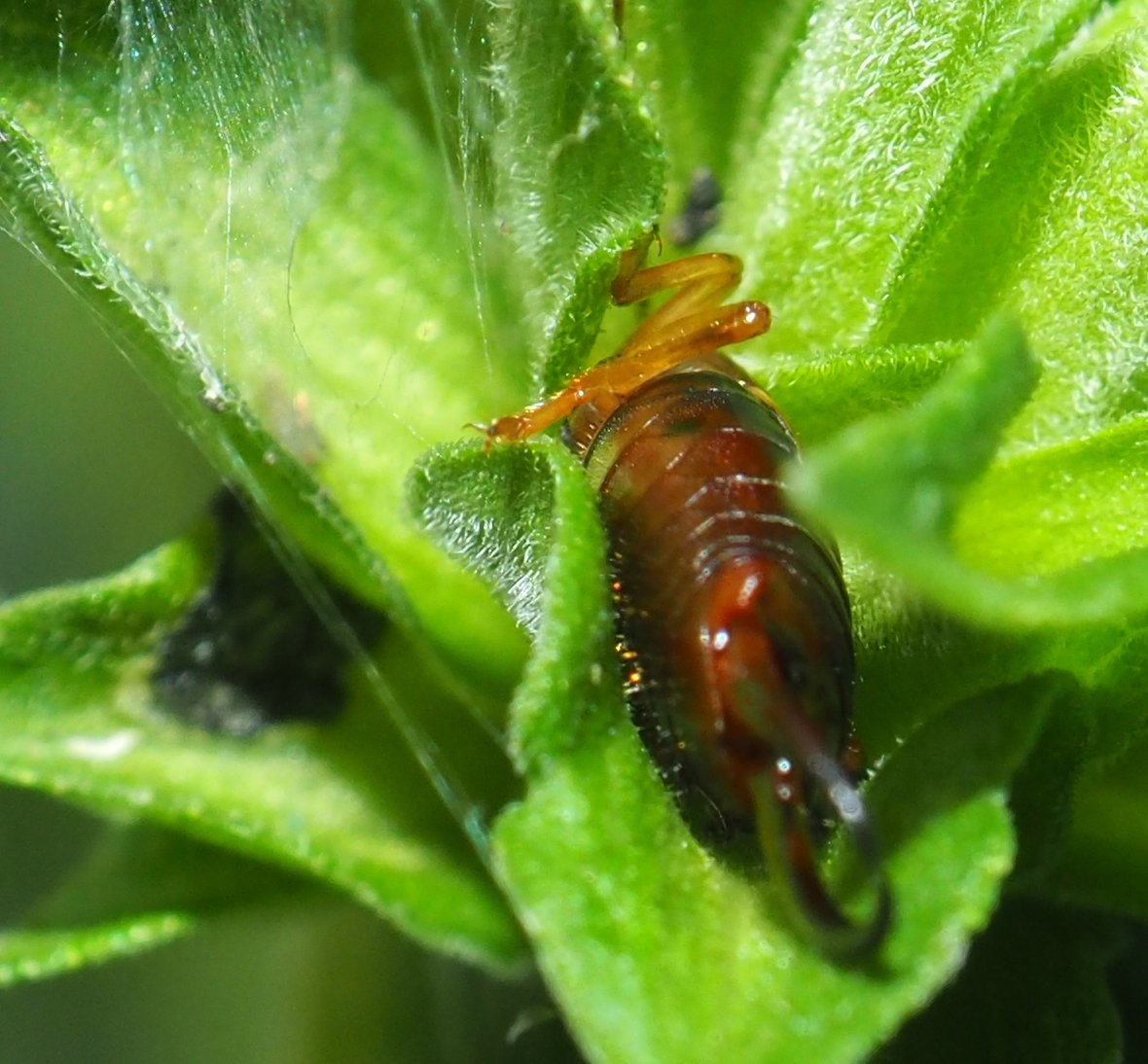
One thing that Kathleen's garden has that I have not seen for at least 10 years is this Chinese mantid (She also has Carolina Mantids, which are all green). Here is a Chinese Mantis, about half-grown and still all-brown. Second image, back in the Backyard Habitat, is of possibly a very tiny insect - the legs that look different are probably antennae.(My first guess had been a tiny spiderling.) Third may be a white harvestman, but I don't think I've ever seen one. I'd say what we're looking at now is a remnant of a harvestman.

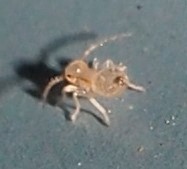
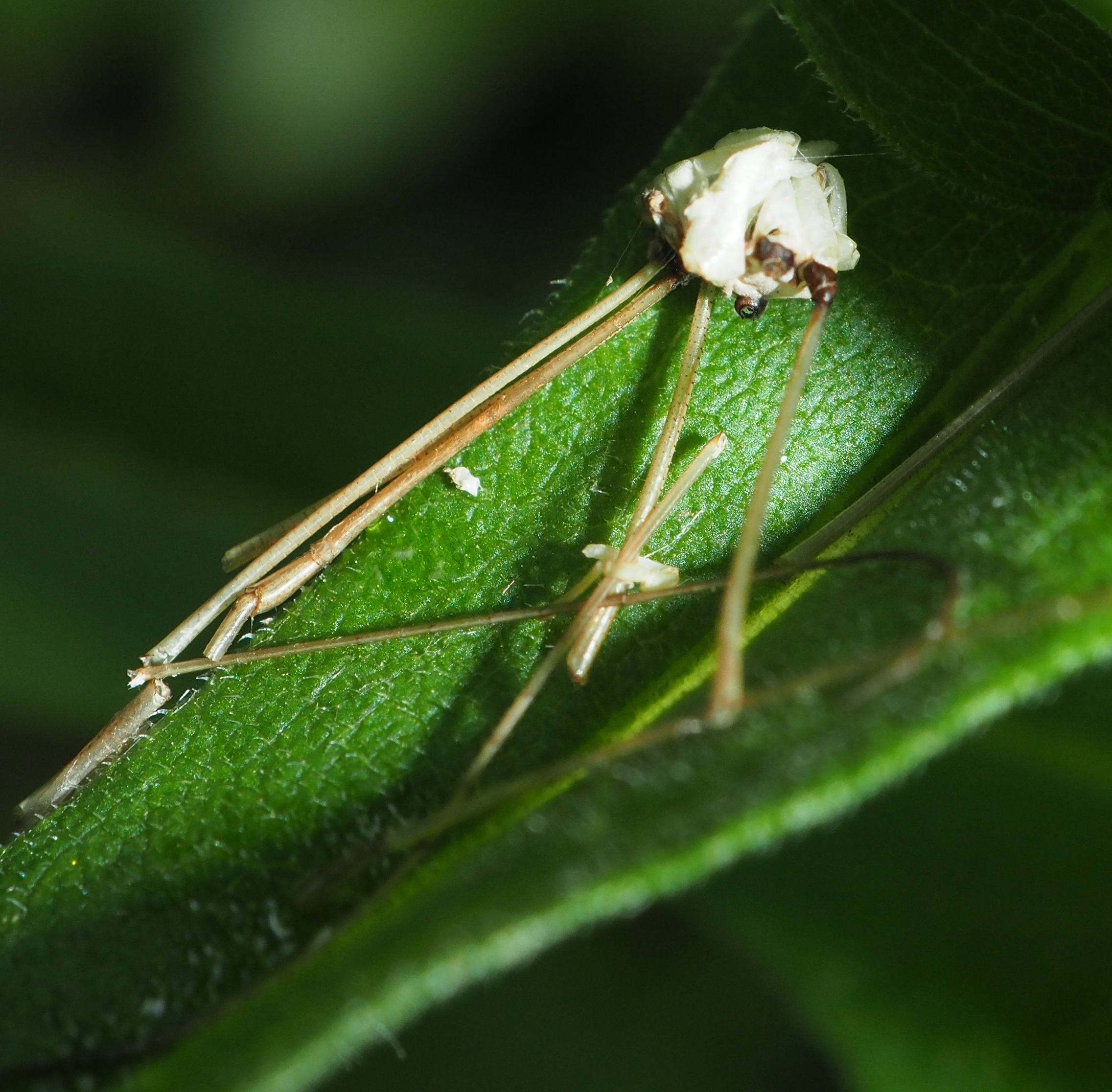
Here's one of my favorite pillbug pictures. The pattern on the wall at that spot seems to bring out a similar pattern in the pillbug. Then there are a couple of scorpionflies. The males' tails are curled up like those of a scorpion. These two appear to have the wing patterns of two different species. Pedantic admission: A scorpionfly is not a fly.

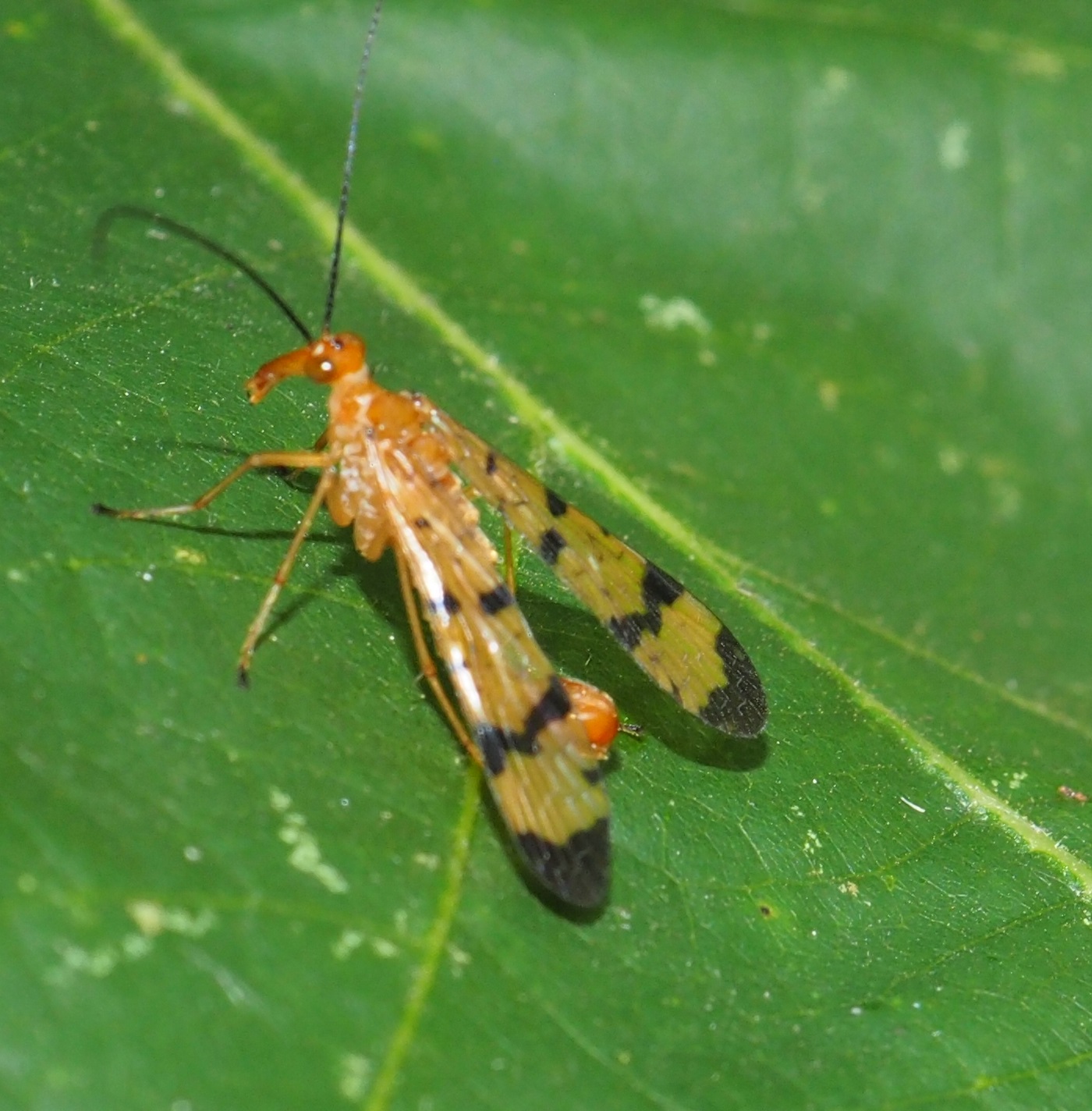

At first I thought this spider was a harvestman. Why isn't it? Count the segments. It has an abdomen and a head. This is the first time I've seen one like it. Next is a crab spider (it is holding its front pair of legs together like a crab's big claw.) The third one is probably a Grass Spider - it is inside a fine web.

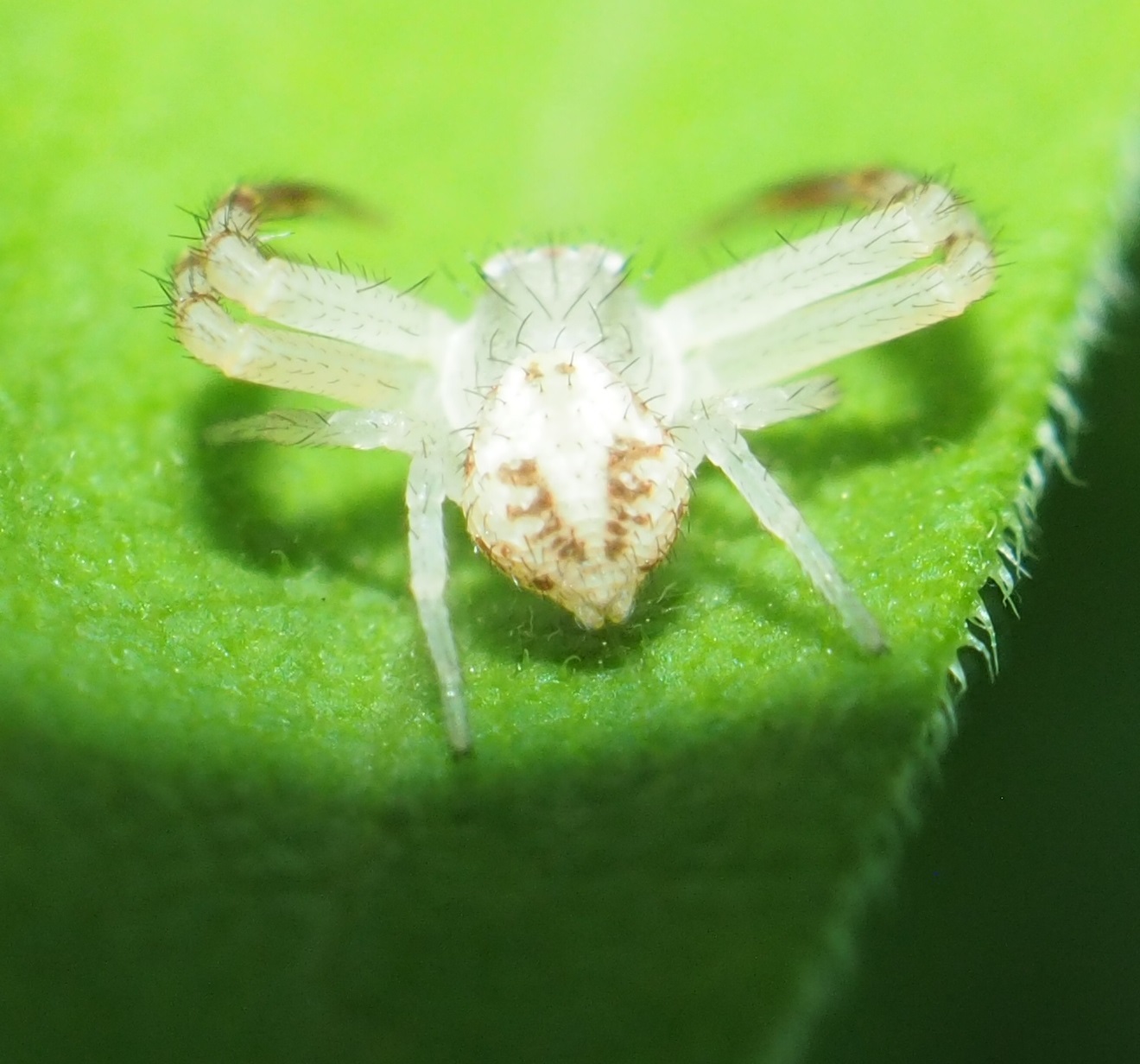
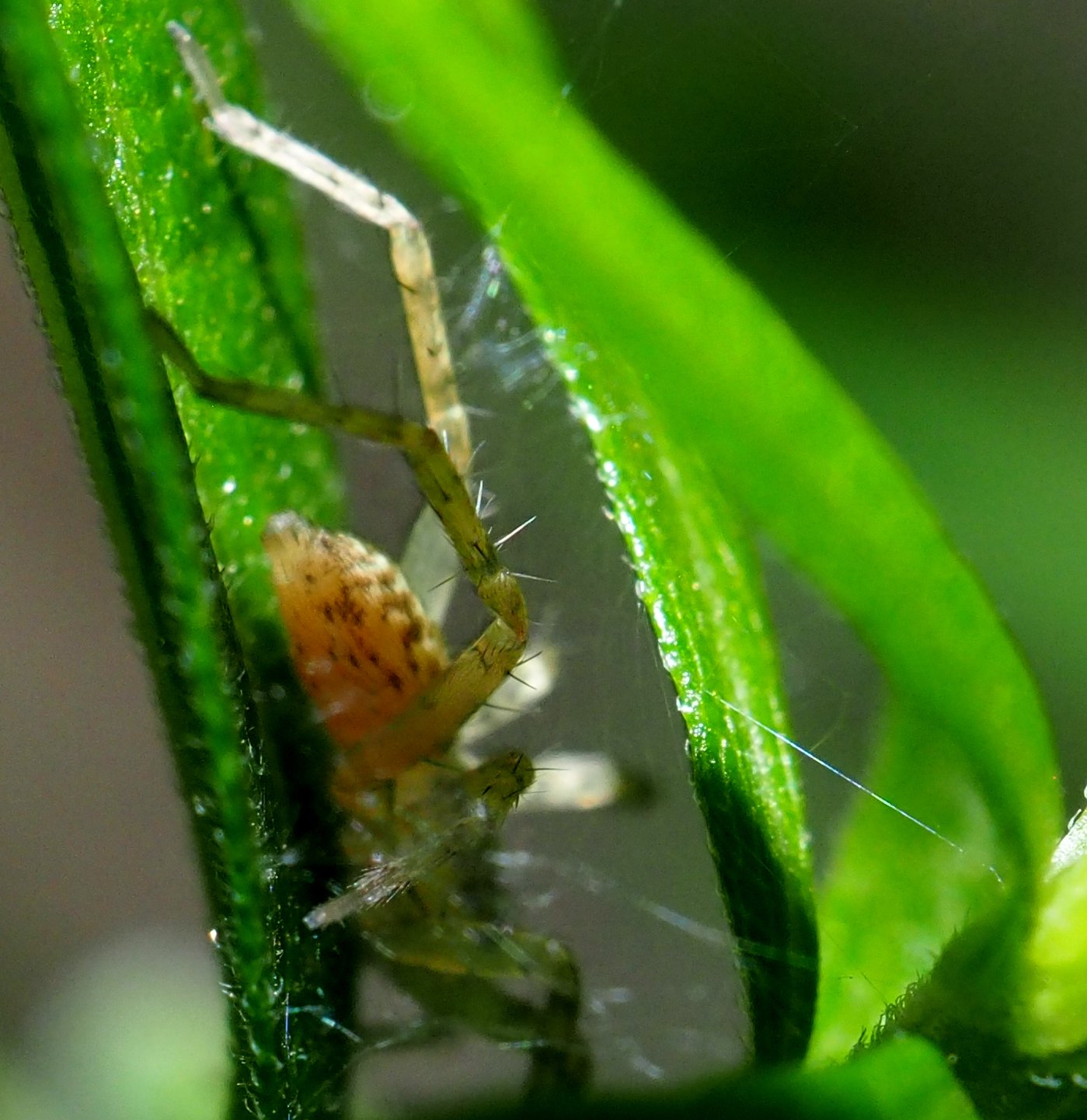
Here is a pretty little jumping spider, and a headlights view. Third is our old friend Naphrys pulex, but we aren't used to seeing the somewhat sinister face-like pattern on the abdomen.
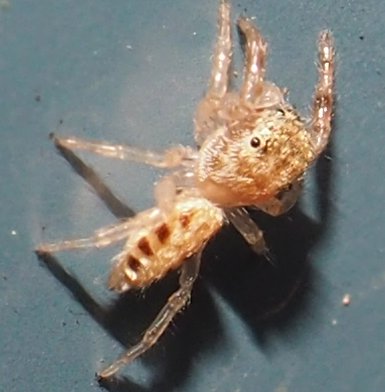
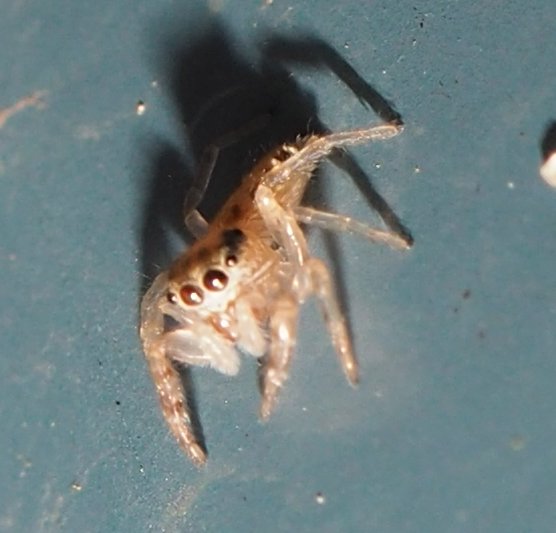

More Naphrys pulex. A couple days later we saw this one with its headlight eyes. Gotta love those jumpers! The last one seems to be a grass spider. Or maybe not. The tip of the abdomen doesn't look sharp enough...

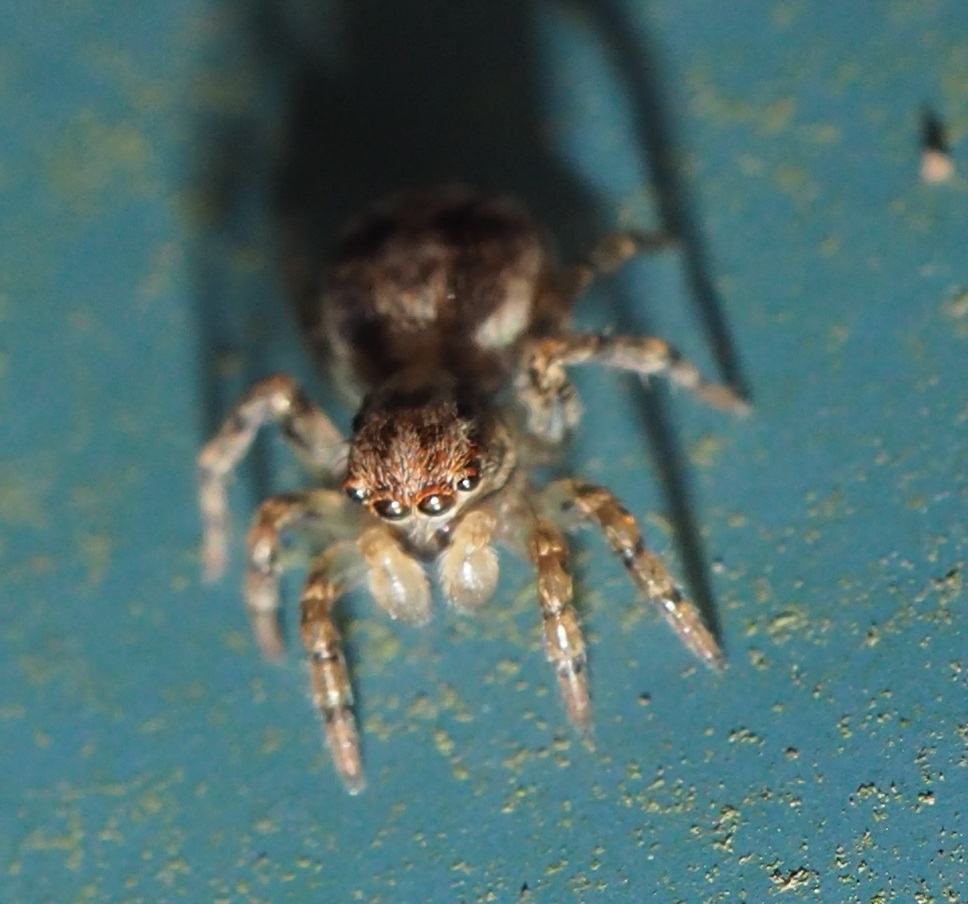
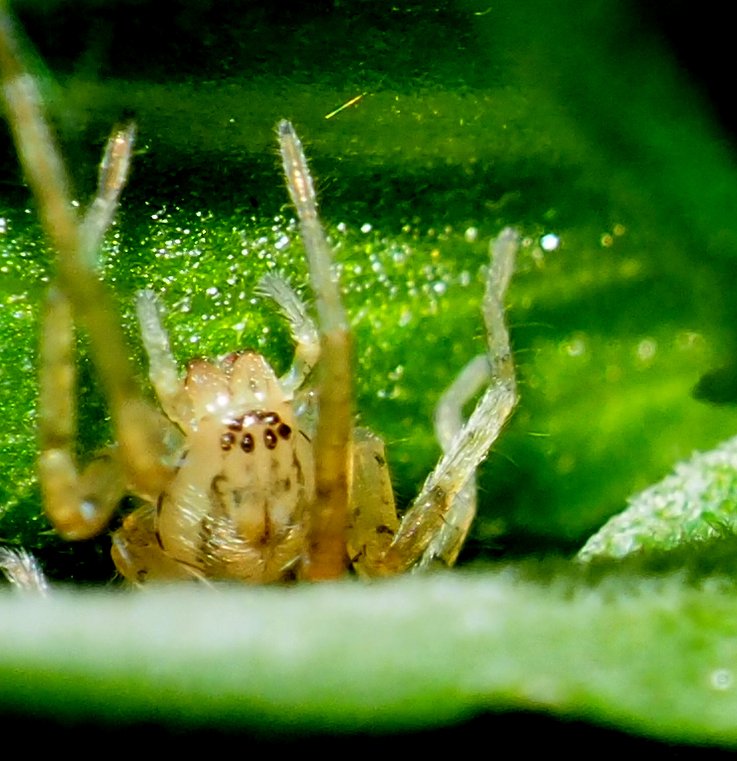
On to the wasps! This first one has the ovipositor of a female ichneumon. This beautiful golden wasp is a newcomer for me. Third is a very tiny wasp and probably new for me.
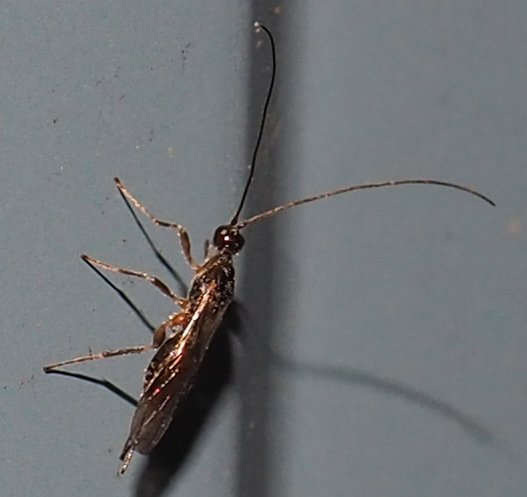
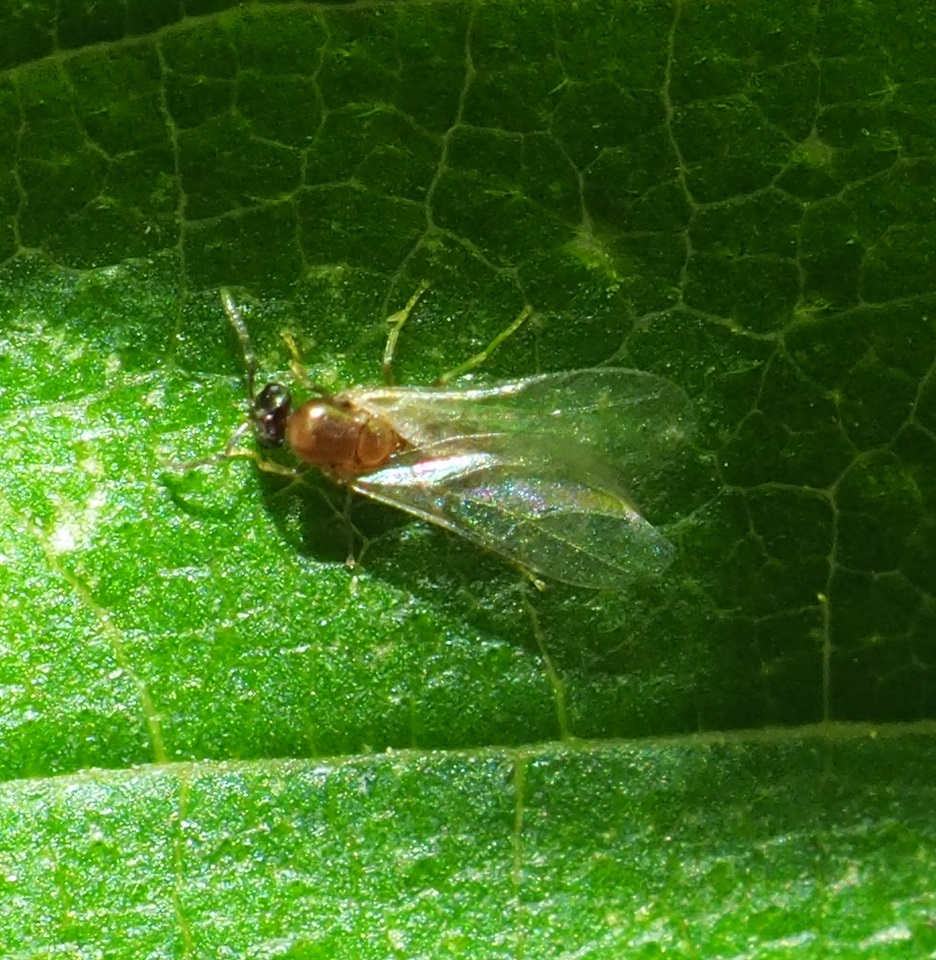
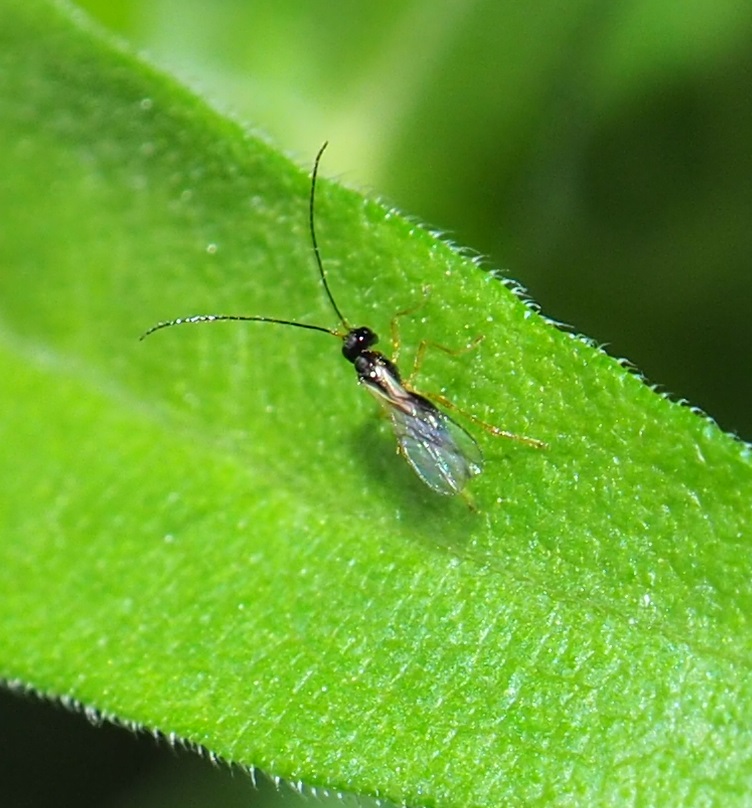
Let's wrap up with some lovely flowers. Here is one of those greenish-white water lilies. Next is a plant in Kathleen's yard but neither of us knows what it is. Any takers? The third is ONE blossom cluster from a beautiful butterfly bush. I've seen Monarchs, Tiger Swallowtails, and a few other butterflies on it, also in Kathleen's yard. Thanks for a great afternoon, K!
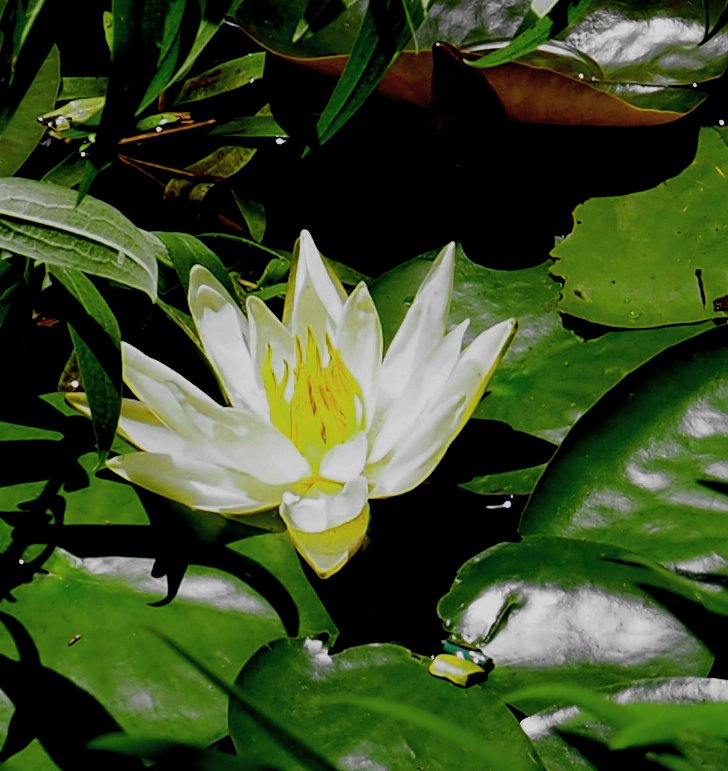
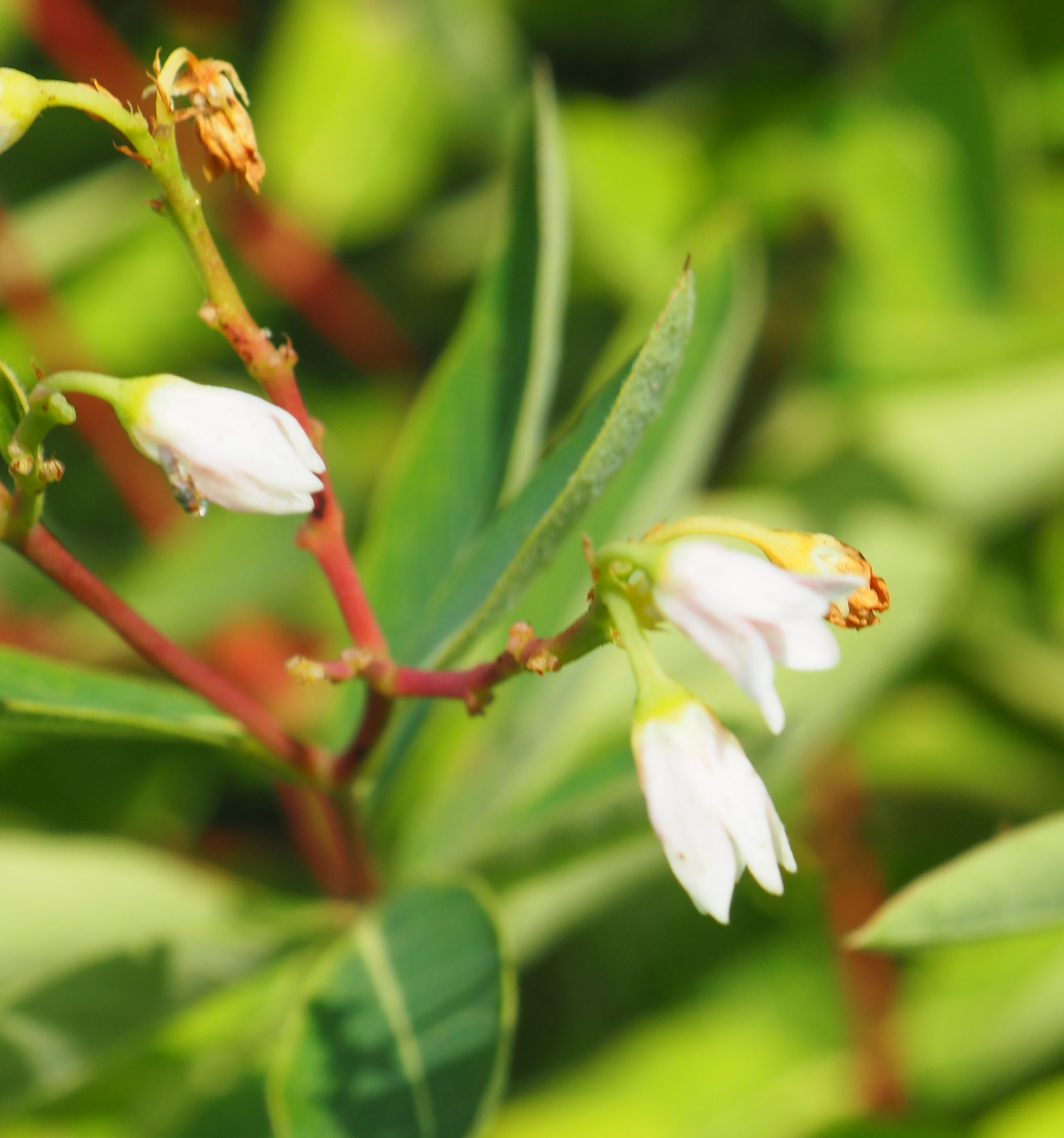
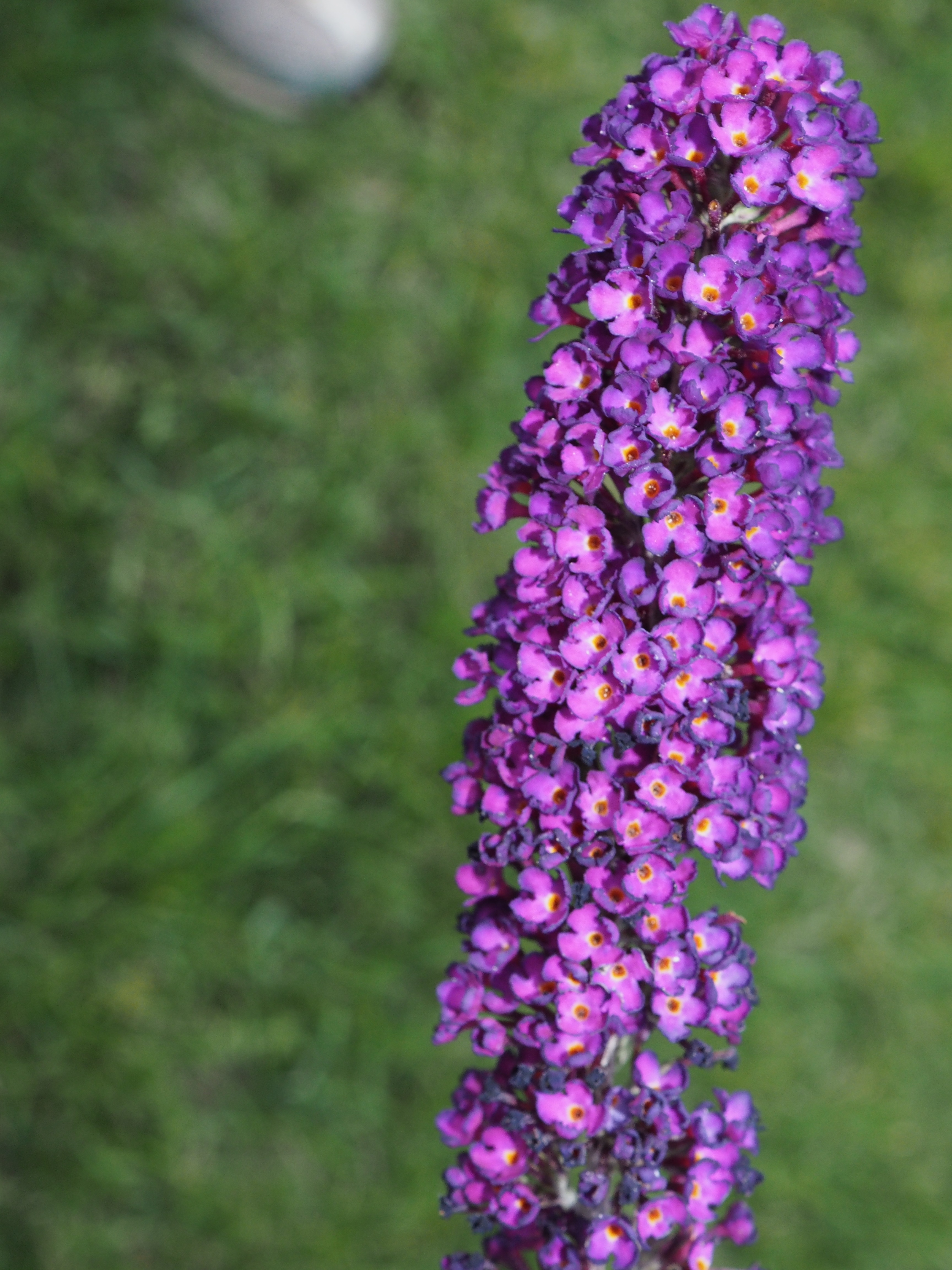
Here, at last, a pond with one gorgeous hardy pink water lily. The fishes seem all right. I have been a little worried since the matriarch Fanny died a couple of weeks ago. The remnant eat well, and seem to enjoy when the pumps are spraying fresh water.
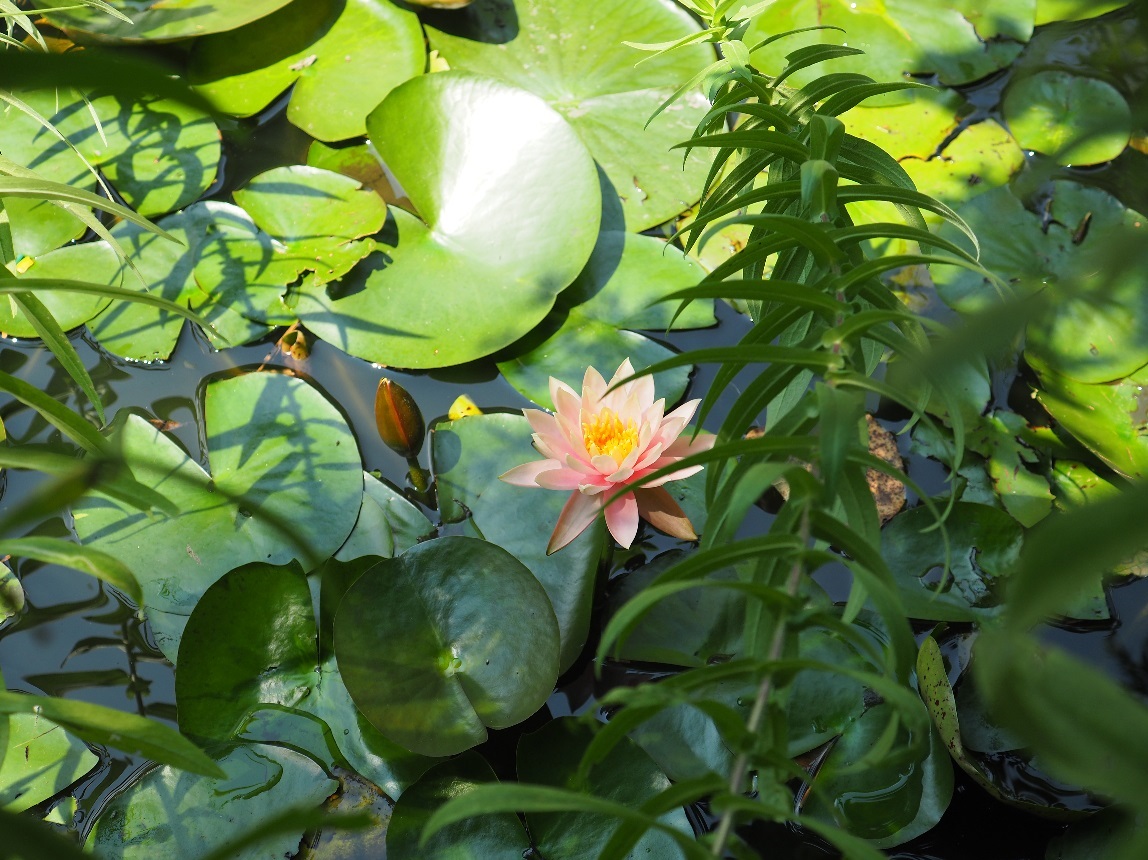
I hope this weekend is going nicely wherever you are. I'm thinking of so many people and so many places. Hoping we can repair this planet one Monarch at a time.
Love to everyone,
Martha
Back to August 5, 2018
Forward to August 19, 2018
Back to main menu
copyright Martha O'Kennon 2018






























































































